The right paint color has completely changed how my bedroom feels. When it seemed too bright, a little cold, or just not “me,” finding the right shade made it restful and a true reflection of my style.
I’m sharing my favorite relaxing master bedroom paint ideas that have helped me unwind and sleep better. I’ll also give you simple tips I’ve used for mixing colors, picking the right finish, and steering clear of common mistakes.
Every idea comes from real-life experience, not just theory. Whether you love soft blues, earthy neutrals, or gentle, nature-inspired greens, you’ll find something that works. Let’s pick the color that makes your bedroom feel more like your own calm, cozy space.
Relaxing Master Bedroom Paint Ideas
Choosing the right paint color for your master bedroom can set the tone for how you relax and recharge. Here are some master bedroom color ideas to help create a space that feels calm, cozy, and truly yours:
1. Pale Sky Blue
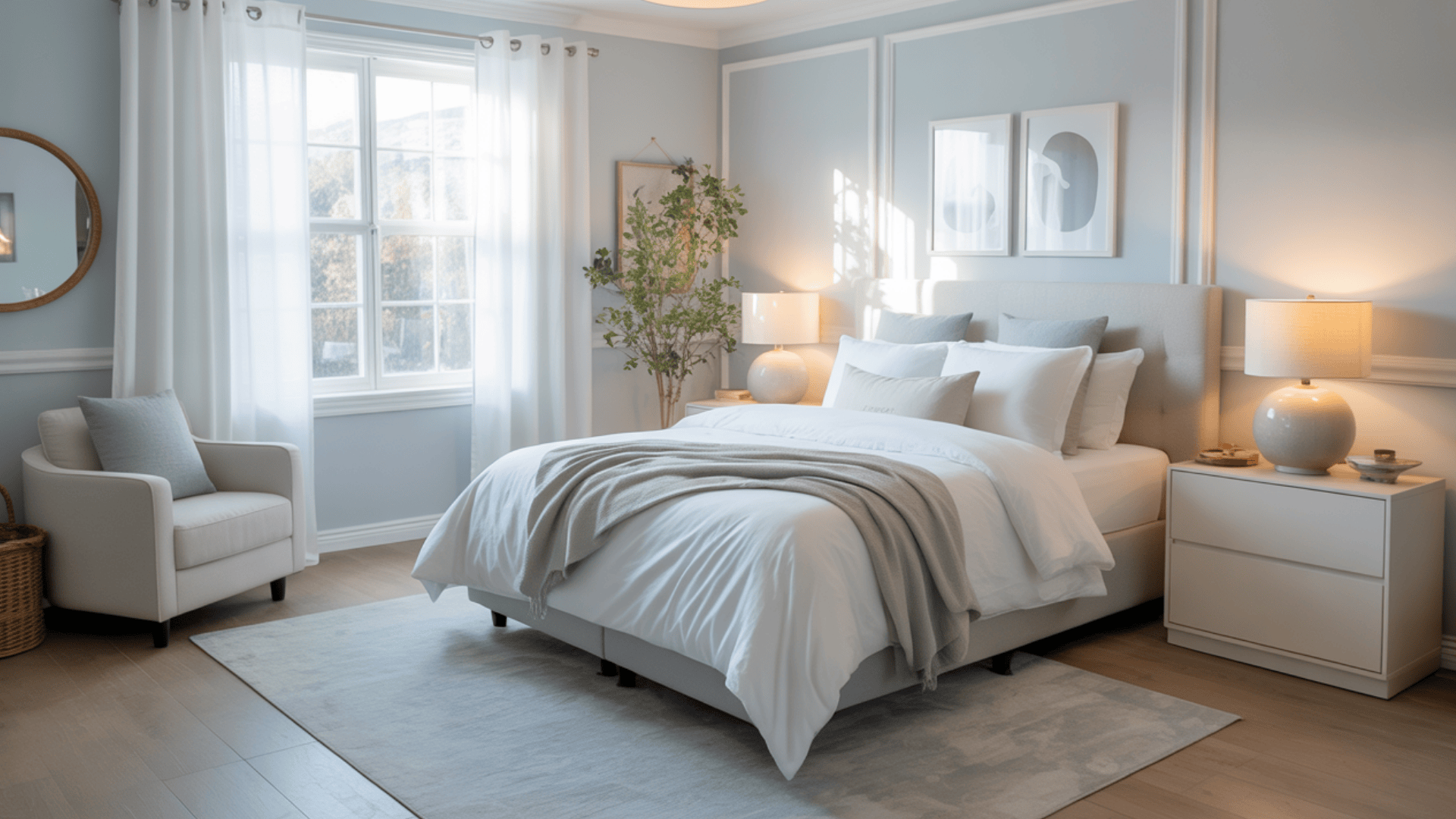
This soft, airy blue brings the peace into your room. It creates a light, open space that feels fresh and clean. You can use it for all walls or just a feature wall to keep things bright without feeling plain.
Soft, sheer curtains in a matching tone can add a layered effect. It also works well with light woven rugs or subtle striped patterns for a coastal touch.
2. Sage Green

Sage green has a natural, grounded quality that’s ideal for rest. Its muted tone works in both bright and dim spaces, creating an easy sense of balance.
Pair it with woven rugs, rattan chairs, or soft beige bedding, it complements wooden furniture and plants, making the room feel connected to nature. You can keep it minimal for a clean feel or layer in patterns for interest.
3. Warm Beige
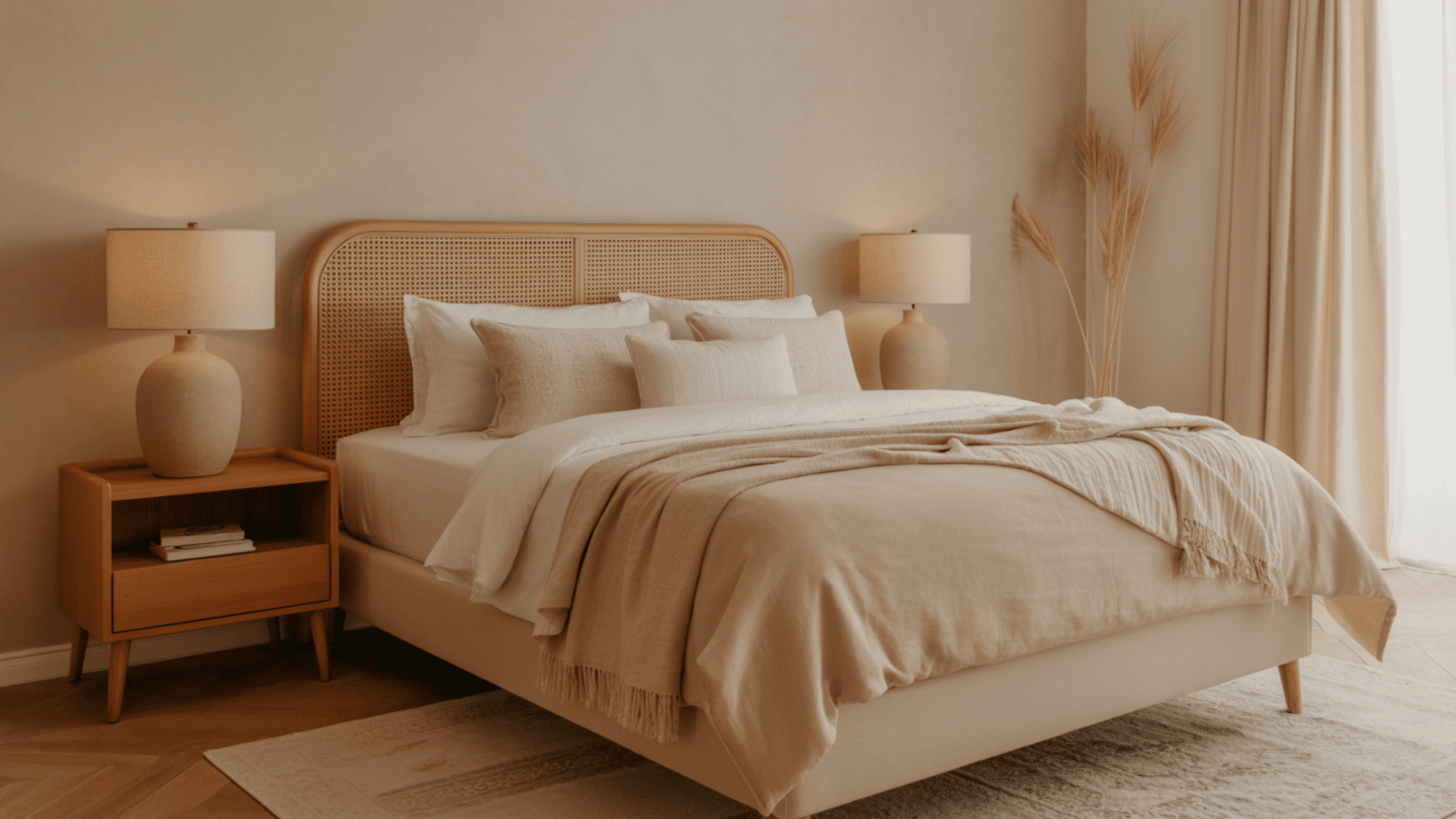
Warm beige makes a bedroom feel instantly welcoming. It carries a gentle warmth without looking heavy, making it perfect for restful spaces.
This color pairs well with off-white, cream, and warm wood tones. It also adapts easily to different decor styles, from modern to farmhouse. Adding textured bedding or a patterned rug can give the room more depth.
4. Lavender Mist
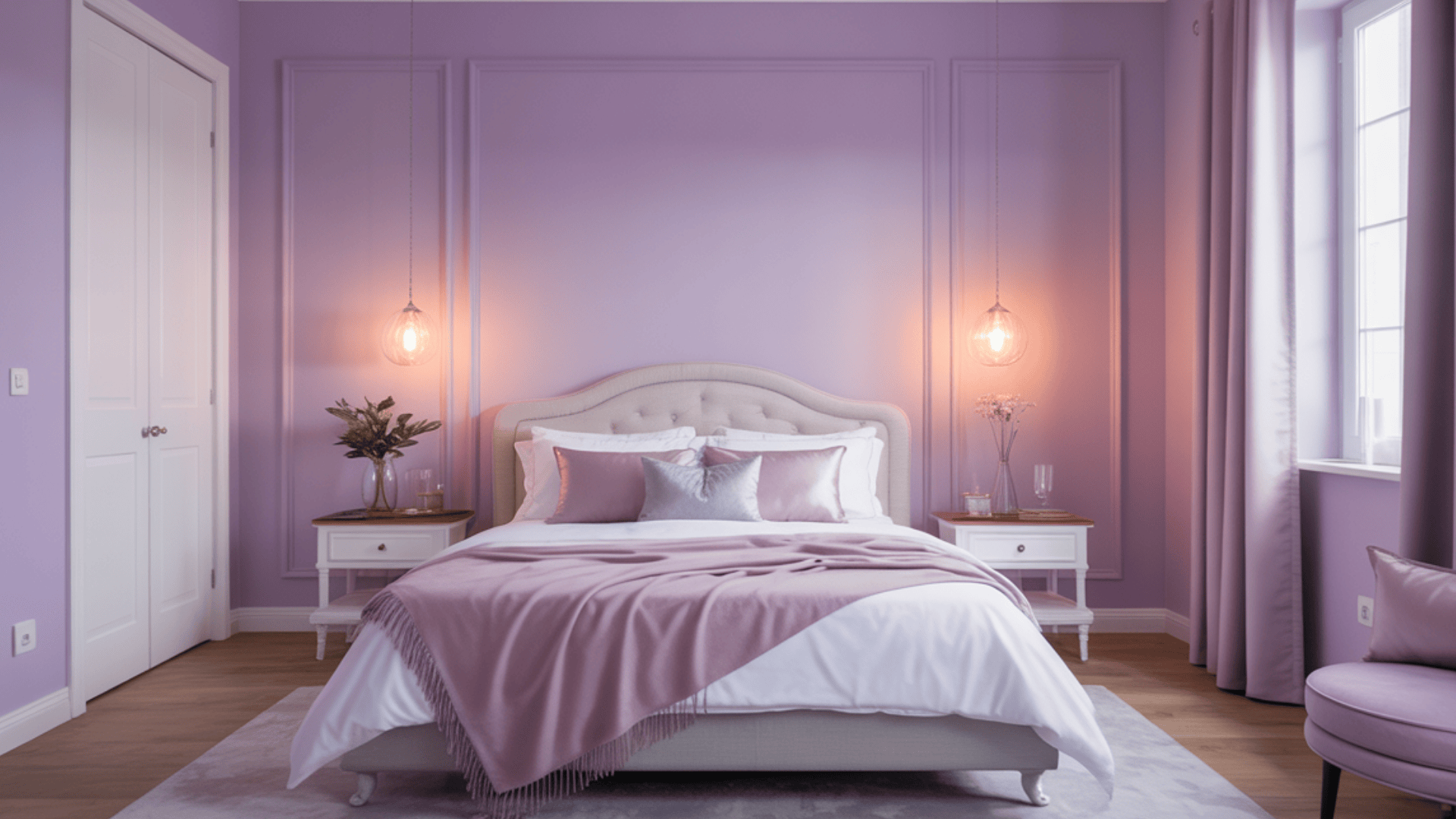
Lavender mist brings a soft, soothing presence to the bedroom. It’s light enough to keep the space open while adding a gentle touch of color.
Works well with white, silver, or cream accents for a calm, airy look. If you prefer warmth, mix it with soft beige or light wood. This shade is especially nice in spaces where you want a dreamy, evening-ready feel.
5. Off-White with Warm Undertones
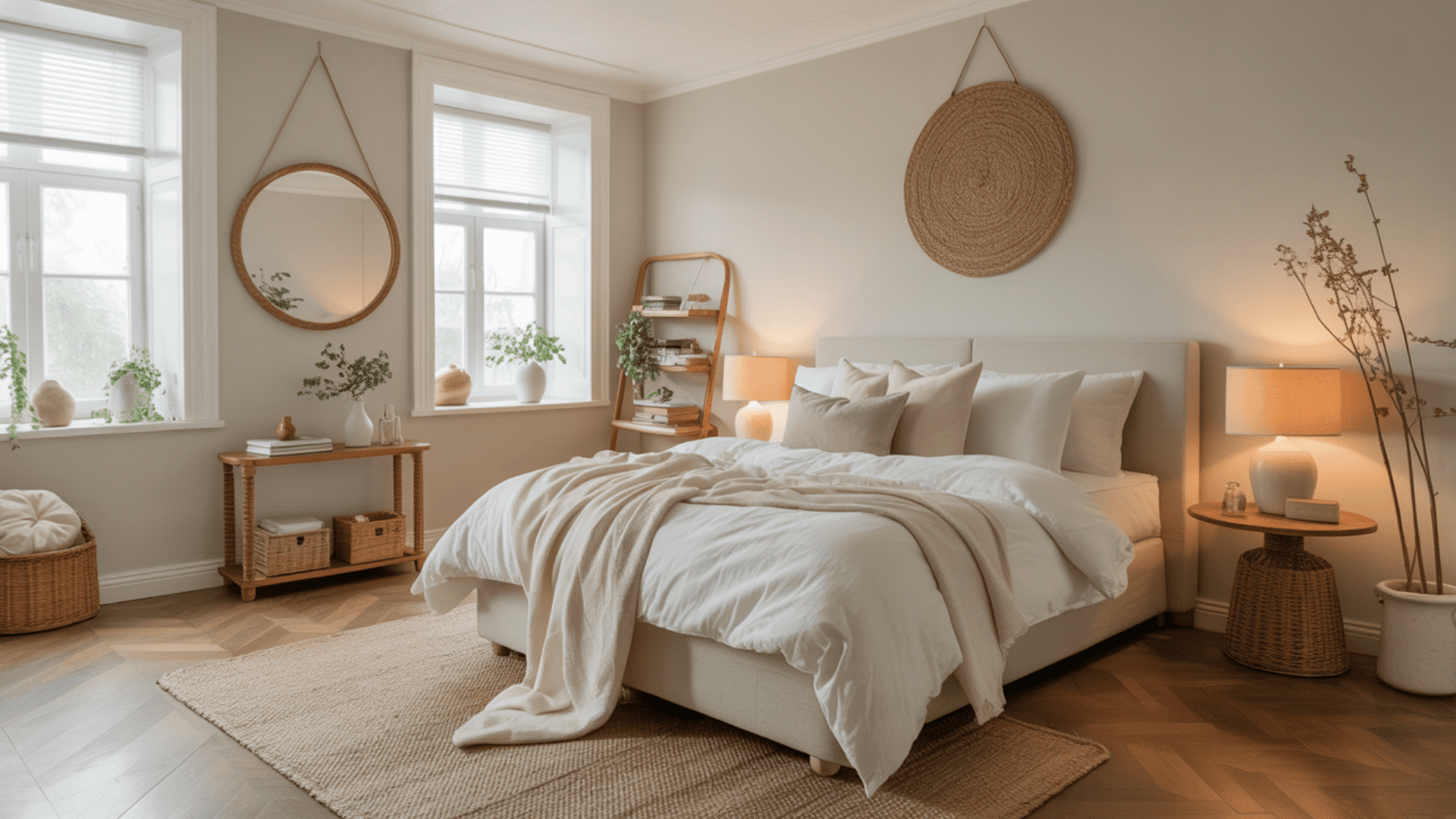
An off-white with warm undertones creates brightness without the stark feel of pure white. It works well in smaller rooms, making them appear larger and more open.
Pairs beautifully with natural textures like linen bedding or wicker baskets. The warmth in the tone keeps the space inviting, even in cooler lighting. It’s versatile enough to suit almost any bedroom style.
6. Dusty Rose
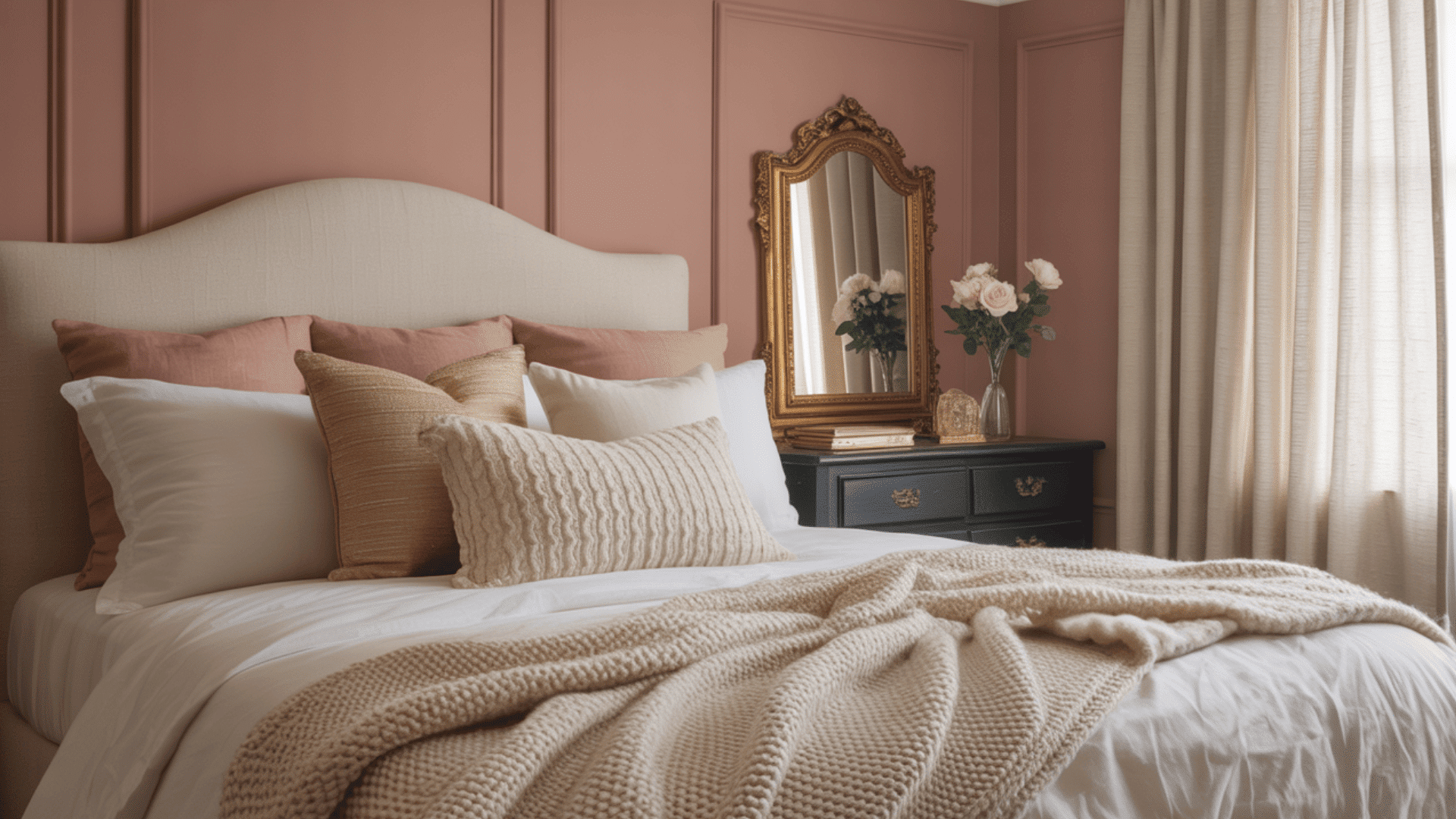
Dusty rose is a muted pink that adds a soft, calming touch without feeling overly sweet. It works well with vintage accents like brass lamps or antique-style mirrors.
Pair it with crisp white trim for a clean contrast or layer with cream bedding for a softer effect. This color also works beautifully alongside muted greens for a natural palette.
It’s warm enough for winter but still fresh in summer, making it a year-round favorite.
7. Slate Gray
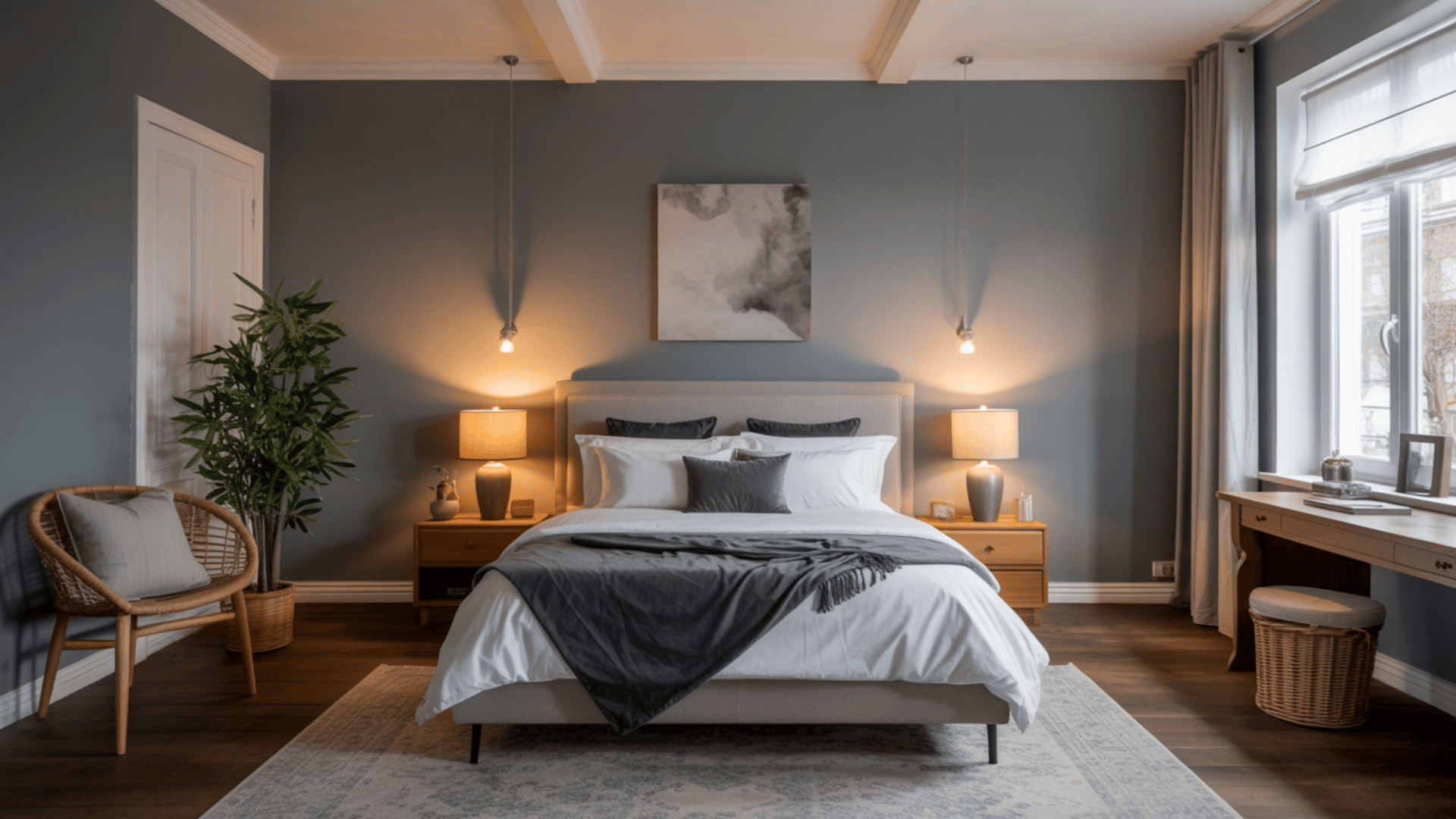
Slate gray brings a grounded, restful energy to the bedroom. Its depth makes it ideal for creating a cocoon-like feel, especially in larger spaces with plenty of natural light.
Use crisp white bedding to keep it fresh or add texture with knitted throws and cushions. Metallic accents, like brushed nickel lamps, add a modern touch. For a softer look, mix it with light wood furniture.
8. Pistachio Green
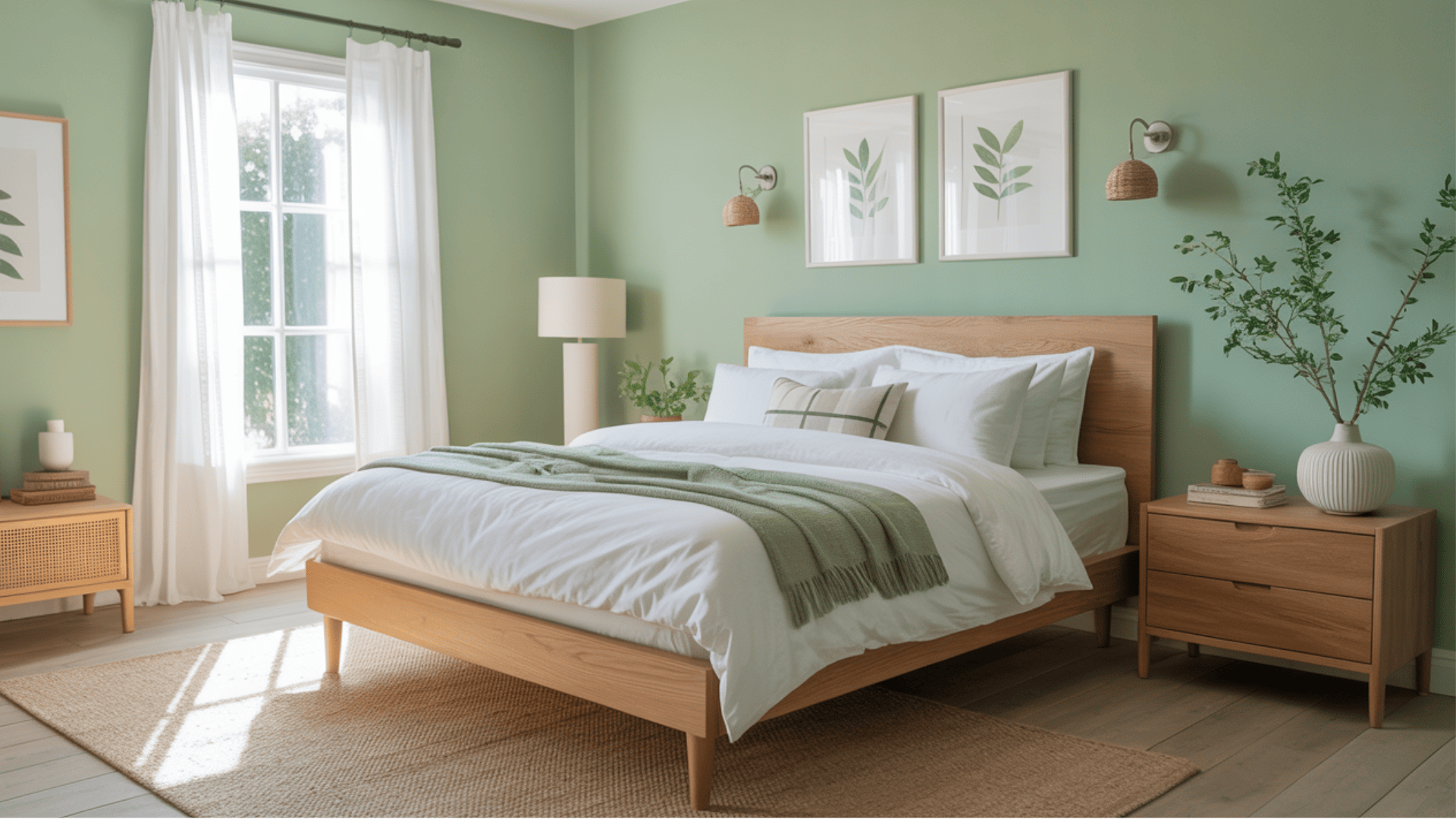
Pistachio green has a light, cheerful quality that lifts the mood while staying calming. It pairs easily with white trim, pale wood, or light gray bedding.
This shade suits both modern and farmhouse styles, making it very versatile. Add potted plants or leafy artwork to enhance its natural feel. It works well in both sunlit and shaded rooms.
9. Pale Aqua
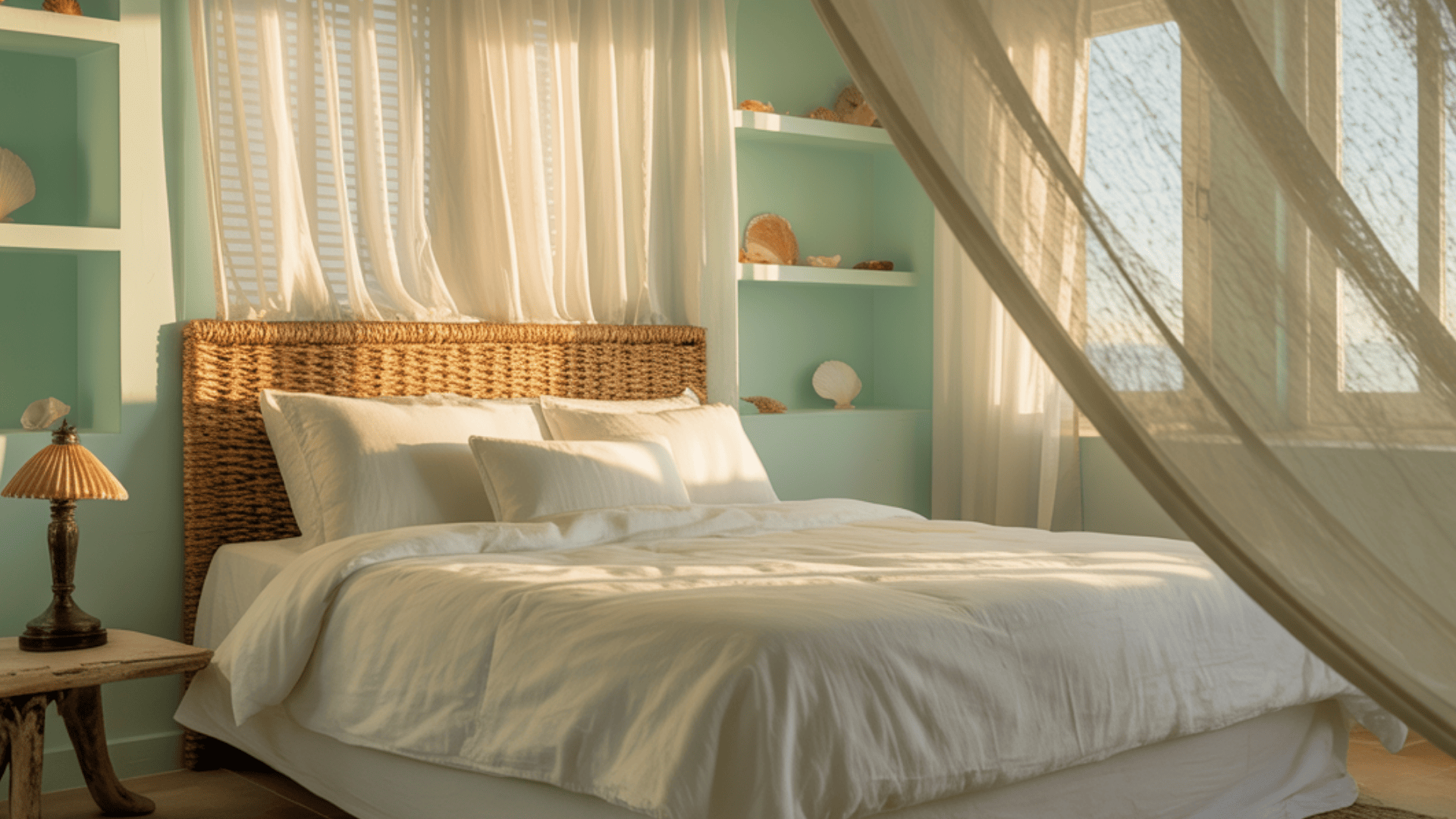
Pale aqua blends the freshness of green with the serenity of blue. It creates a breezy, coastal-inspired mood, especially in rooms with lots of sunlight.
Pair it with white or sandy beige accents for a relaxed, beachy look. Keep decor light and uncluttered to let the color shine. Works beautifully with natural textures like seagrass rugs or linen curtains.
10. Greige (Gray + Beige)
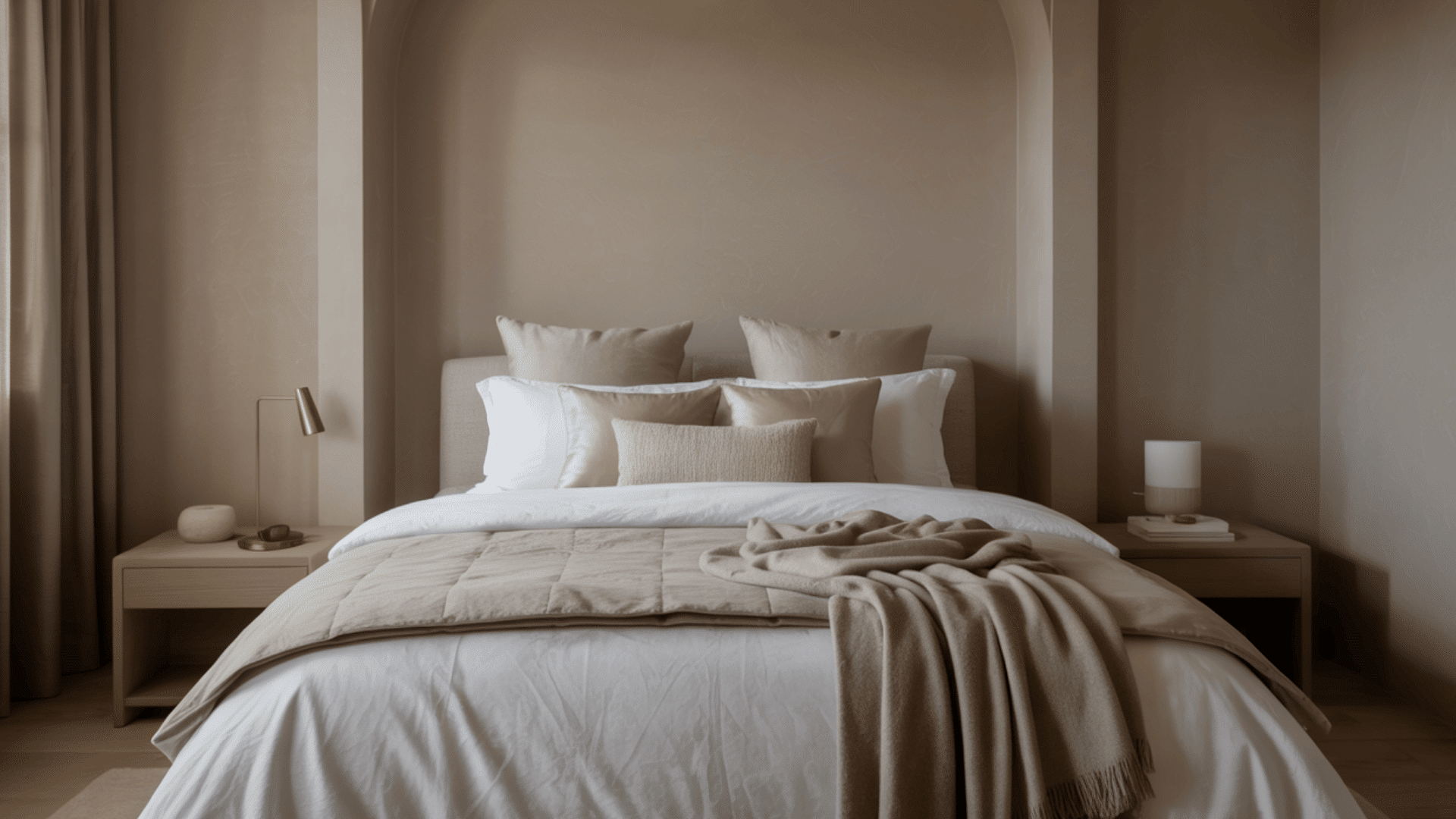
Greige is a balanced mix of gray and beige, offering warmth and softness in one shade. It’s versatile enough to work with both cool and warm accents.
Use it with white trim for a clean, modern look or layer with natural fabrics for coziness. Works well in minimalist spaces but can also suit traditional styles. It’s a dependable base color for changing decor over time.
11. Muted Coral

Muted coral adds a gentle warmth with just a hint of vibrancy. It’s softer than bright pink or orange, making it easy to live with.
This color works well with neutral bedding and gold or bronze fixtures. Pair it with light wood for a balanced, welcoming look. Ideal for adding personality without overpowering the room.
12. Alabaster White
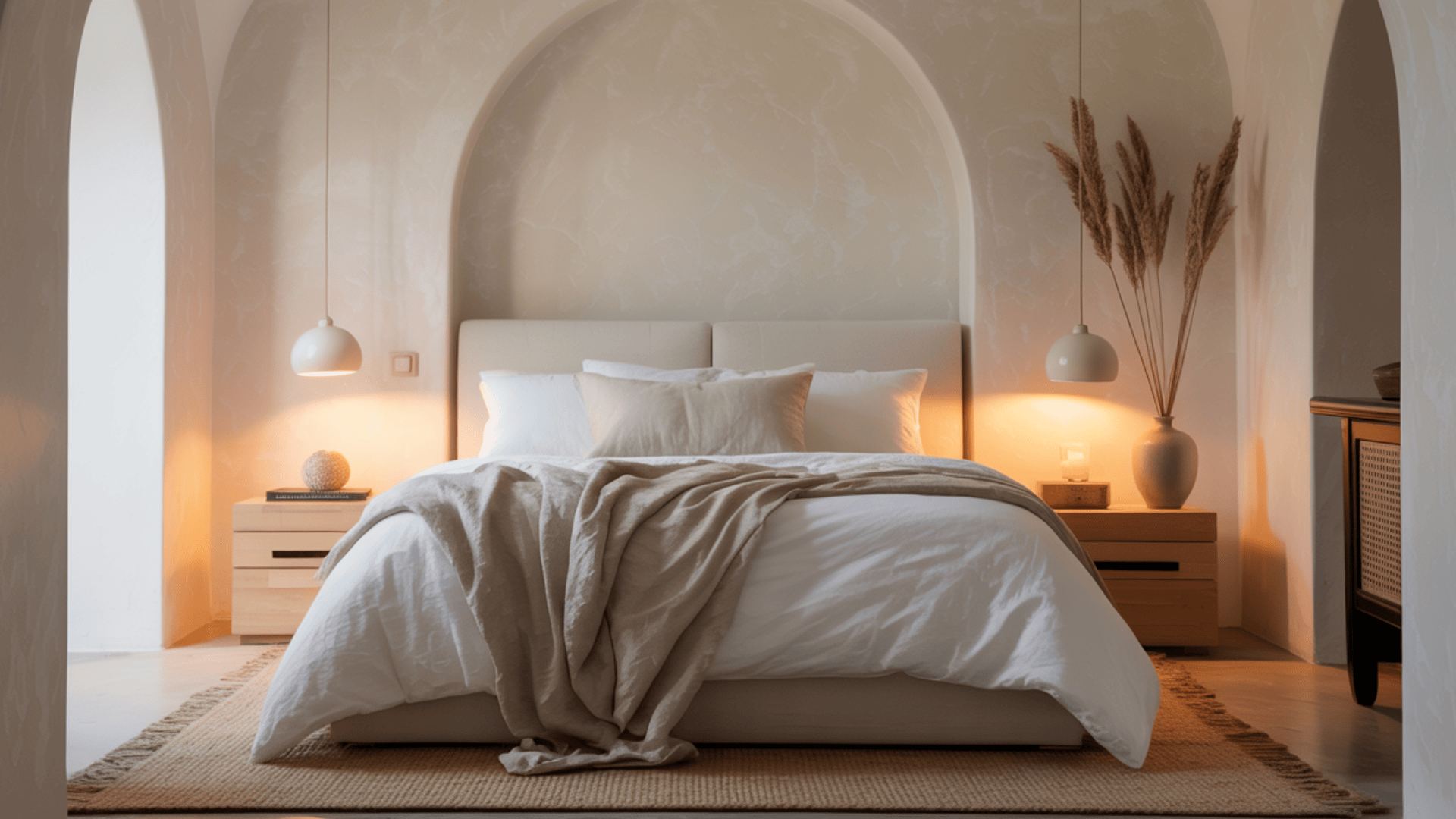
Alabaster white is a creamy, soft white that brightens a room without feeling harsh. It’s perfect for small bedrooms or spaces with limited natural light.
Pair it with warm wood tones for a cozy feel or keep it crisp with pale gray accents. It’s a timeless shade that works with almost any style. You can easily change the room’s look by swapping accessories.
13. Dusty Blue
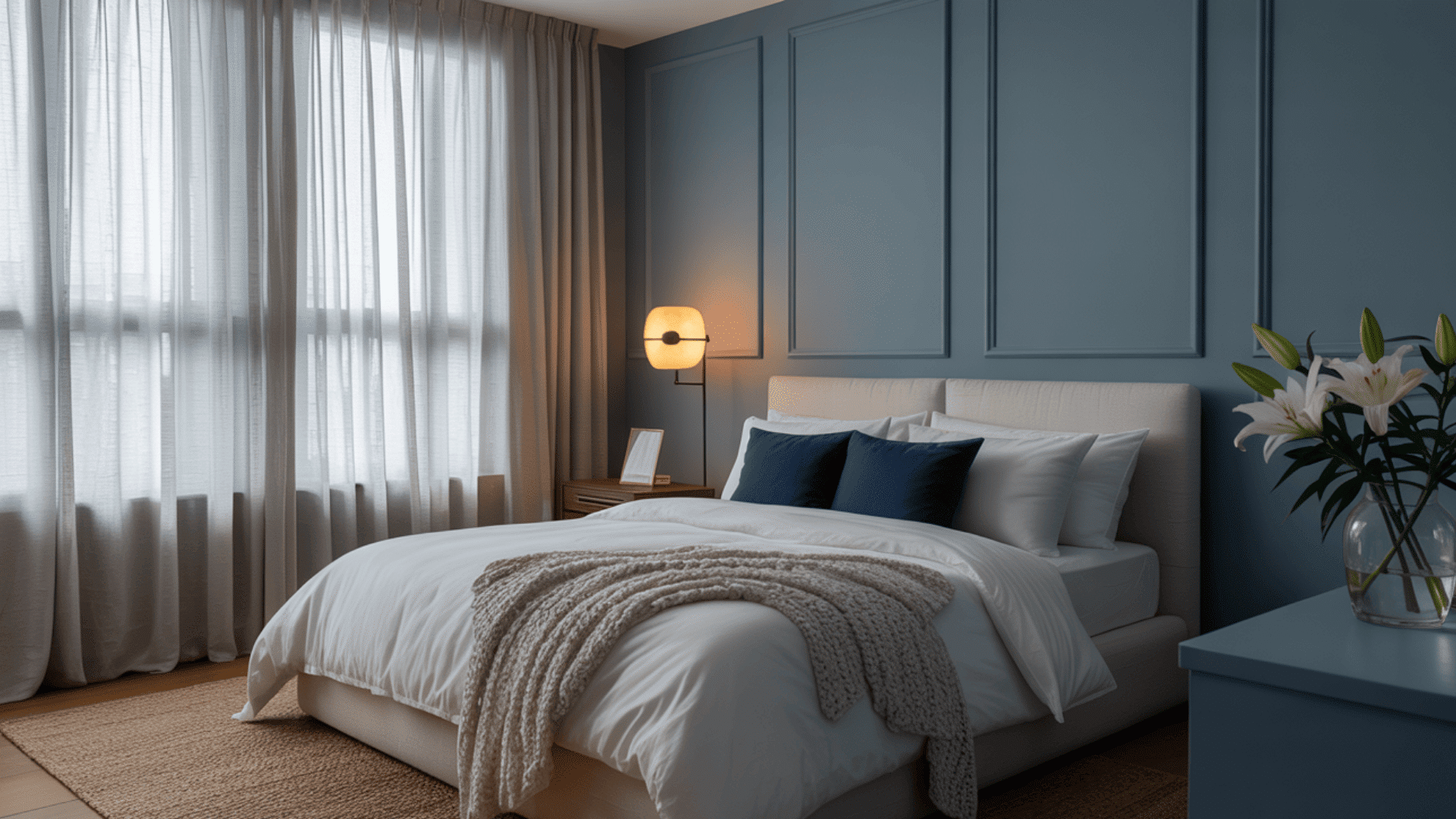
Dusty blue is muted yet rich enough to give the room character without feeling heavy. Its calming quality makes it a great choice for both traditional and modern spaces.
Pair it with white trim for a crisp contrast or combine it with navy for a subtle, layered look. It works beautifully with soft textures like cotton, wool, or linen to create a comfortable and inviting feel.
14. Mocha Taupe
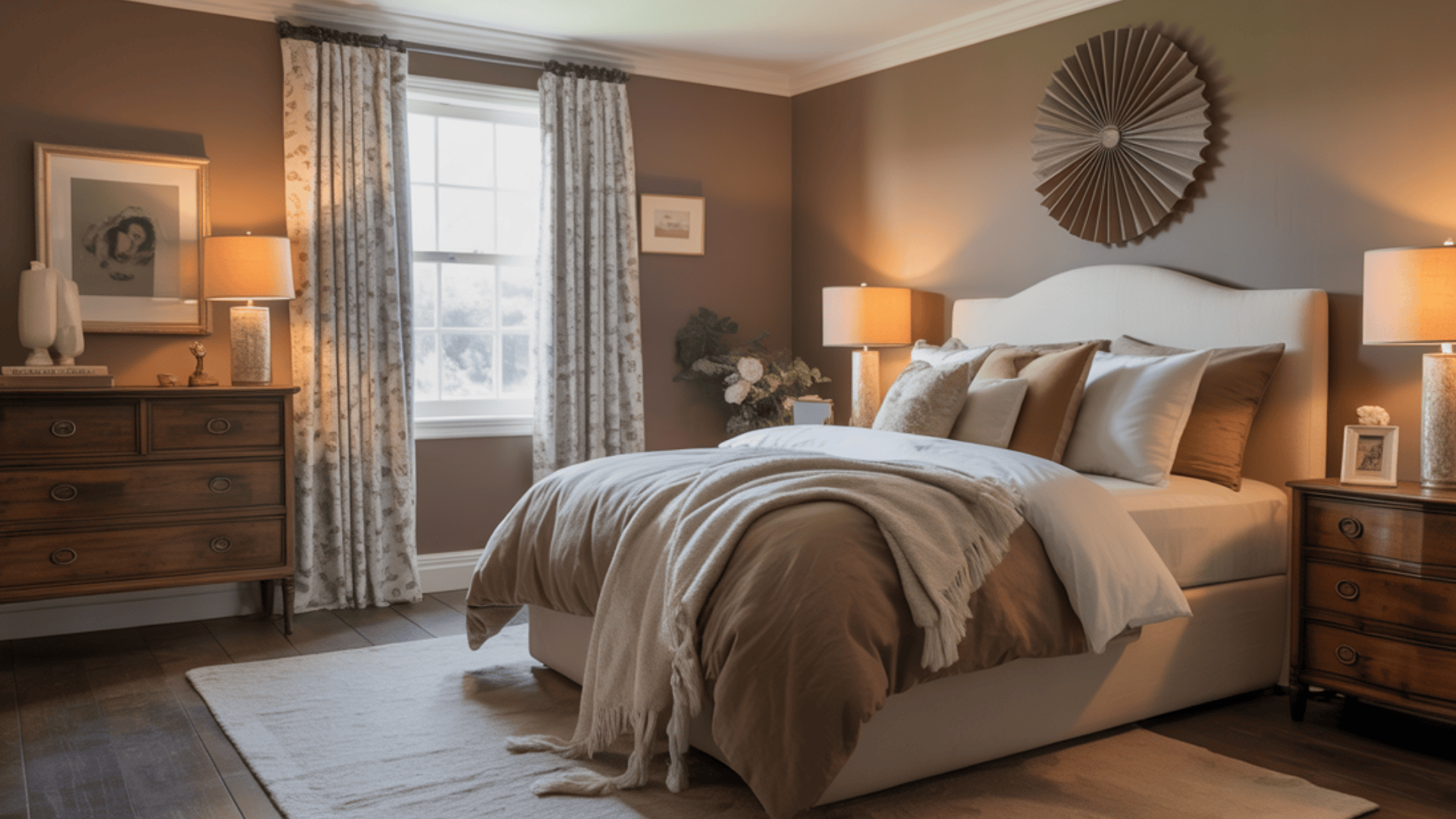
Mocha taupe offers warmth and sophistication in one shade. It’s deeper than beige but still soft enough for a restful space. Use it with cream or ivory bedding for a gentle contrast that feels balanced.
Gold or bronze accents can add subtle elegance without making the room feel formal. This color works especially well with plush fabrics like velvet or chenille for a cozy yet refined feel.
15. Spring Mint
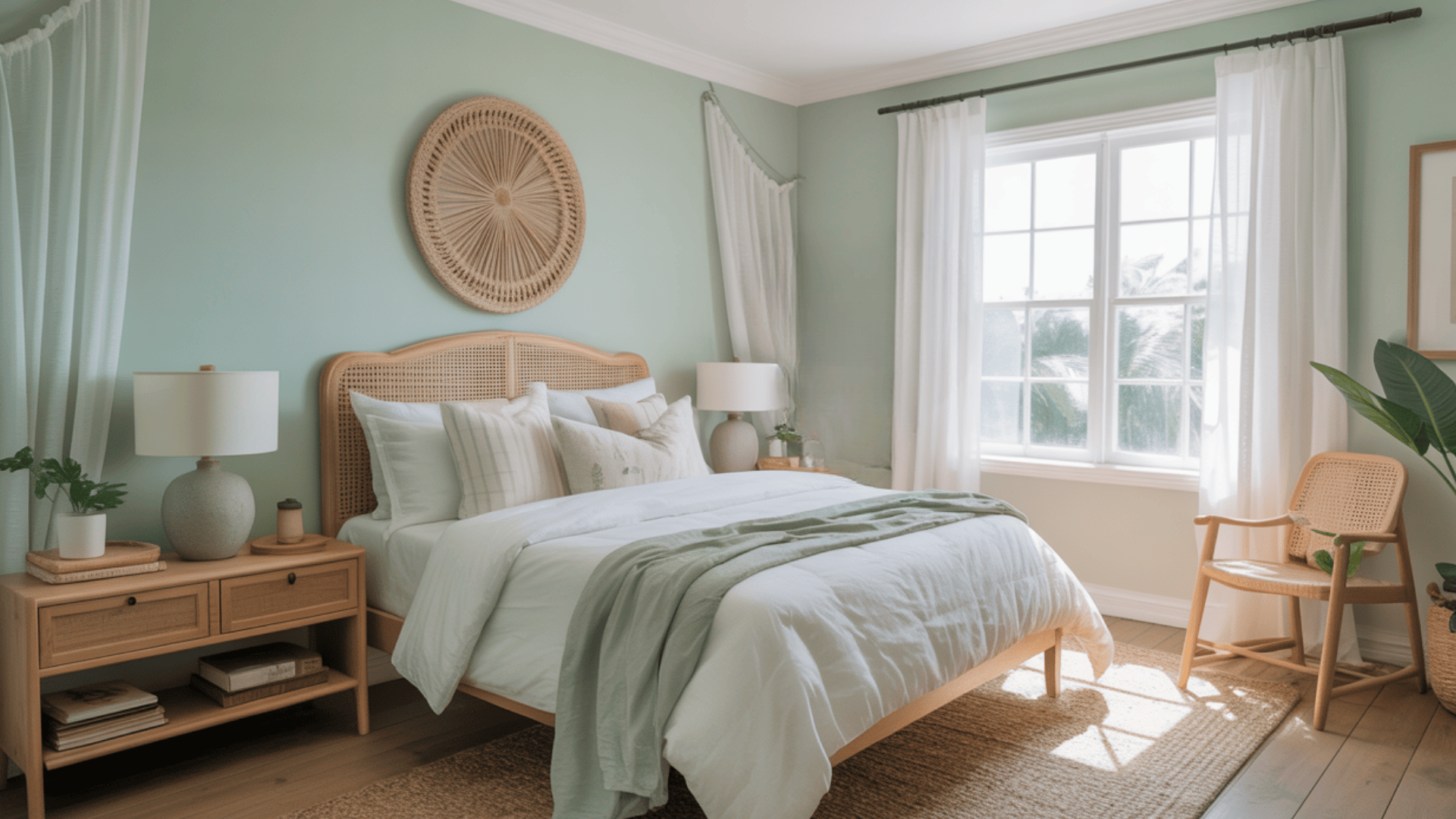
Spring mint is a light tone that keeps the space open and breezy, making it perfect for smaller rooms or spaces that need a lift. Pair it with white or pale wood furniture for a clean, easy look.
Lightweight fabrics like cotton or linen help keep the room feeling cool and relaxed. You can also add potted plants or leafy prints to complement its fresh, natural vibe.
16. Buttercream Yellow
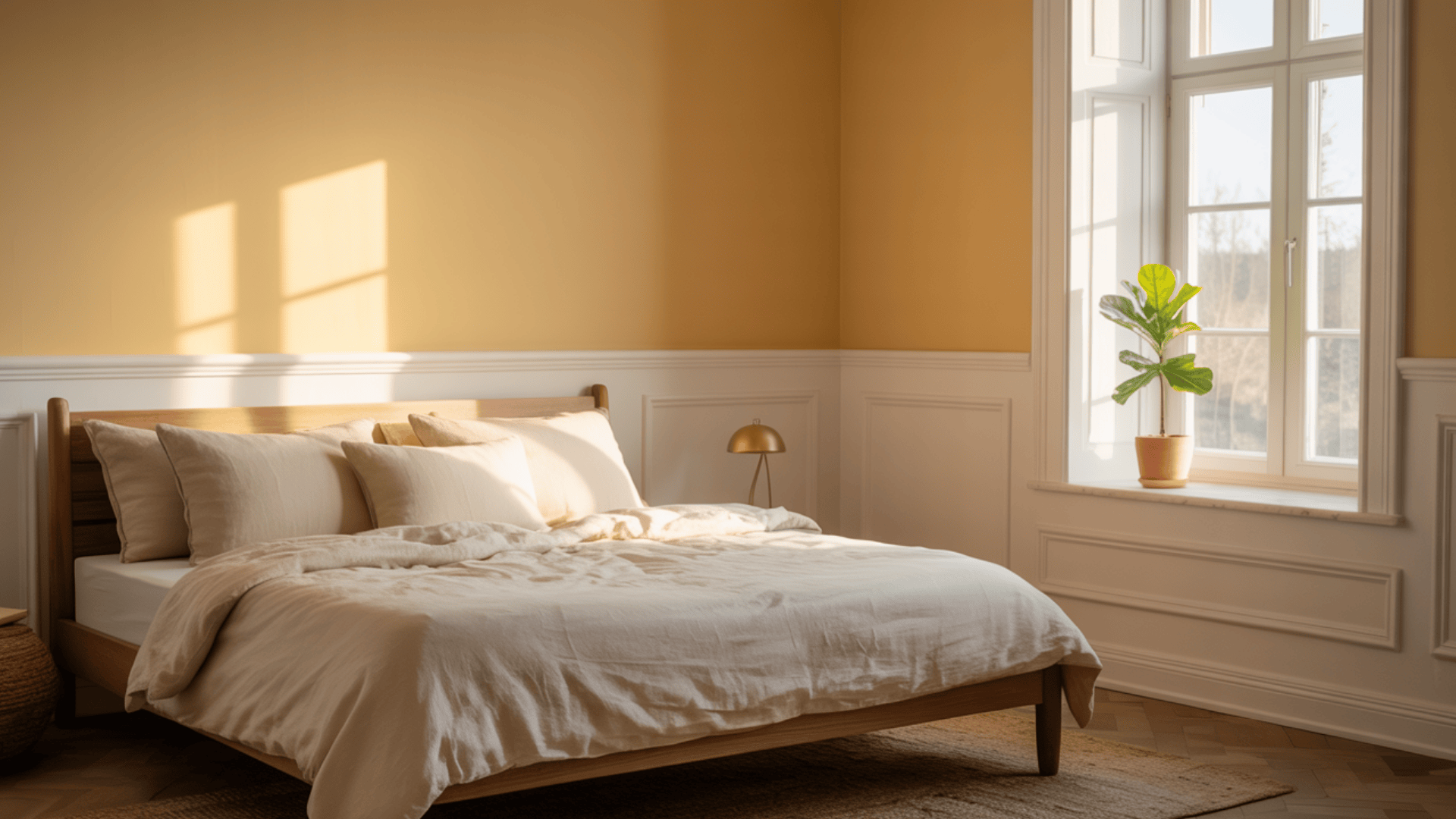
Buttercream yellow adds warmth without being overly bright. It has a soft, inviting quality that’s ideal for morning light. Pair it with white trim and natural wood for a sunny yet gentle feel.
Works well in both traditional and cottage-style bedrooms. A cheerful choice that still encourages relaxation.
17. Cool Lilac
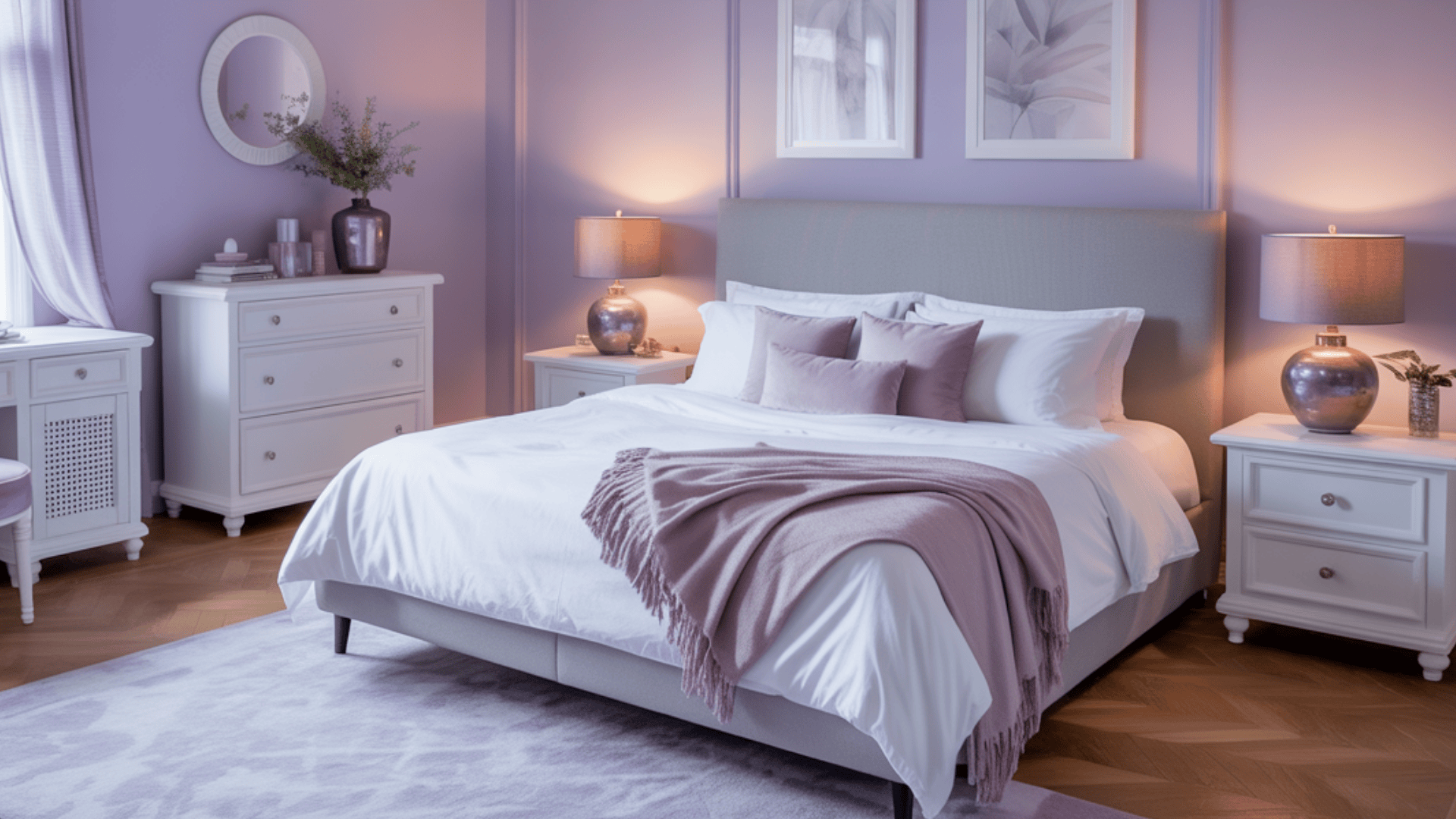
Cool lilac offers a hint of purple softened by blue undertones, creating a calm and airy feel. Works beautifully with white furniture and silver accents for a fresh look.
Keeps the room feeling light while still adding personality. Add soft fabrics and gentle lighting for a spa-like atmosphere. This shade suits both modern and classic styles.
18. Pebble Gray
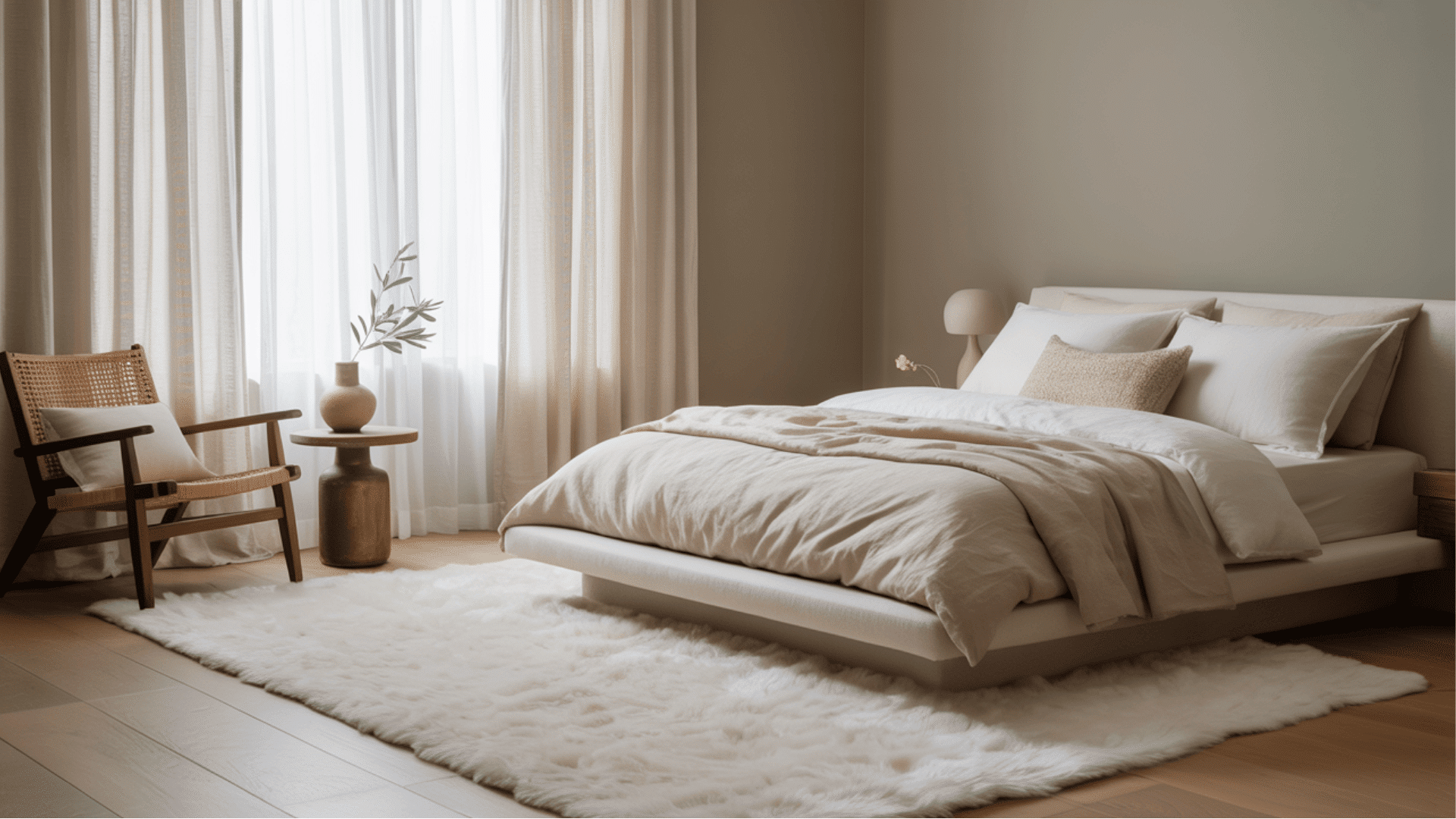
Pebble gray is a soft, natural neutral that’s easy to decorate around. It can be warm or cool depending on your lighting and the accents you choose, making it highly versatile.
Pair it with white linens for a crisp, clean look or use warm wood furniture to add depth. This shade works just as well in a minimal, uncluttered space as it does in a layered, textured design.
19. Cloud White
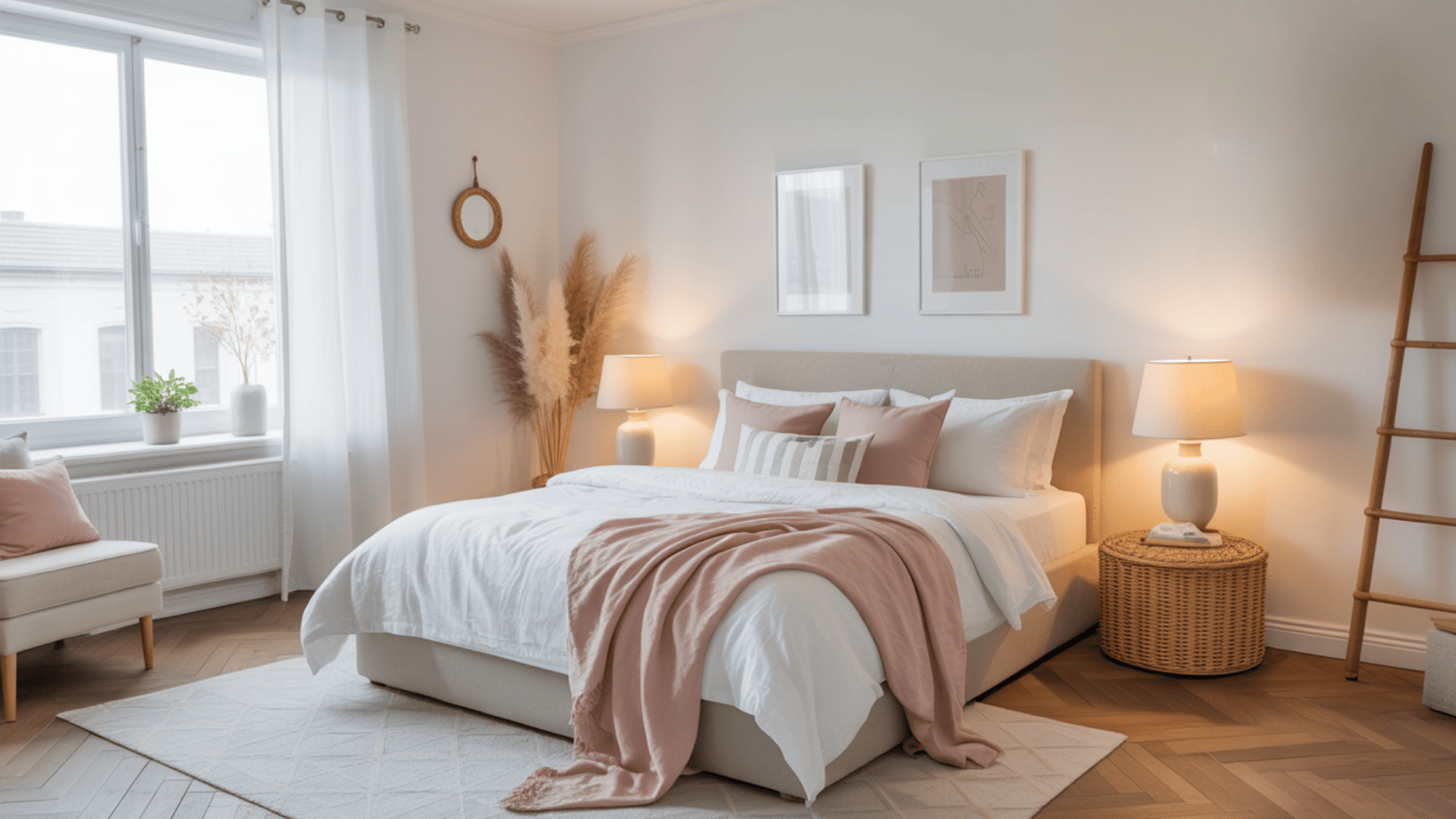
Cloud white is a barely-there shade that keeps the room feeling bright and airy. Its subtle softness makes it more inviting than pure white. Works well with muted pastels or soft grays for a gentle palette.
Pair it with natural textures like jute or wool for added warmth. It’s a flexible choice for any style of bedroom.
20. Earthy Clay
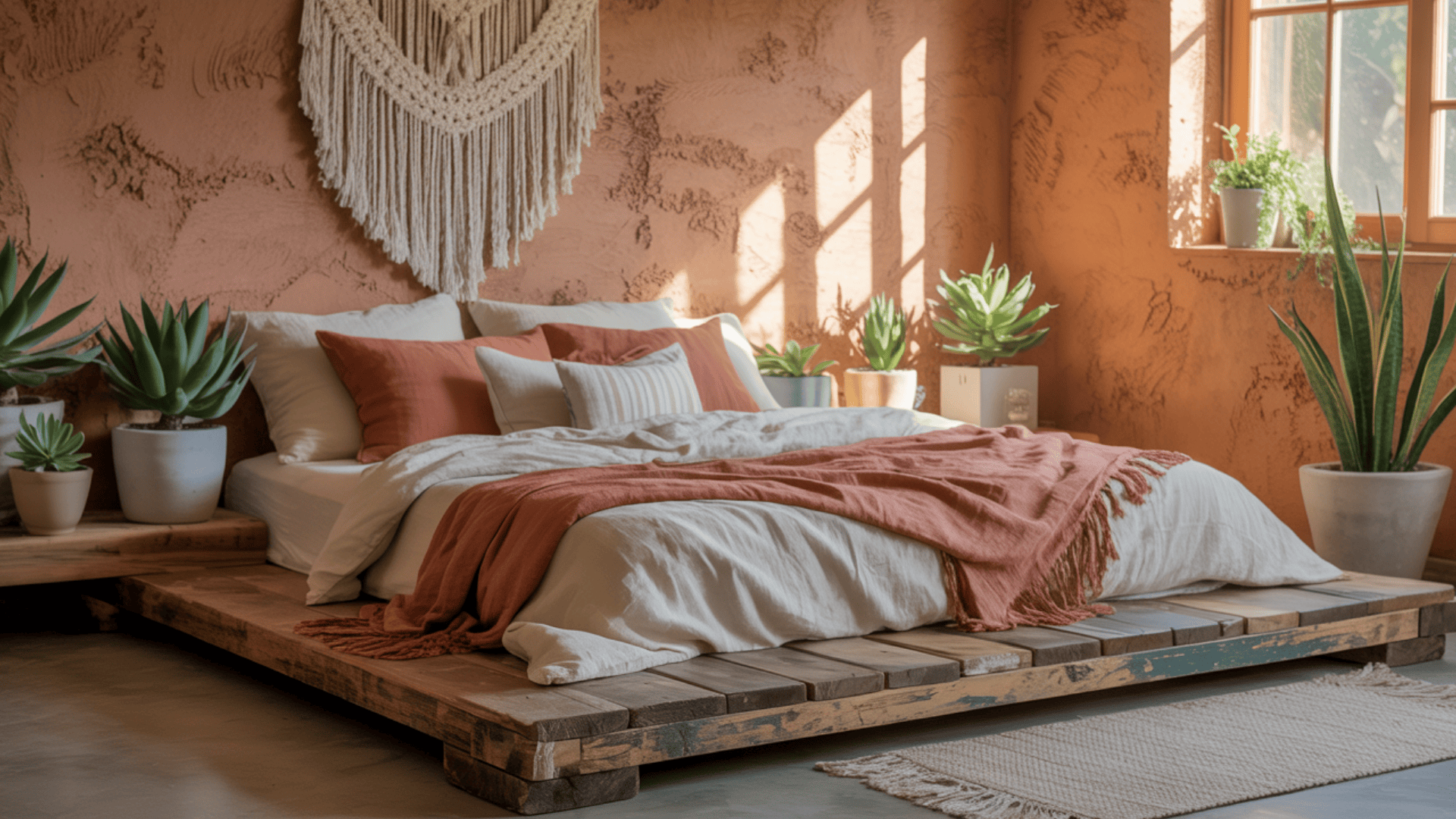
Earthy clay adds depth and a natural feel to the bedroom. Its warm tone works beautifully with woven fabrics and rustic wood. Ideal for creating a cozy, layered look.
Pairs well with cream or deep beige for a balanced feel. Perfect for a space that feels connected to the outdoors.
21. Sea Salt Blue
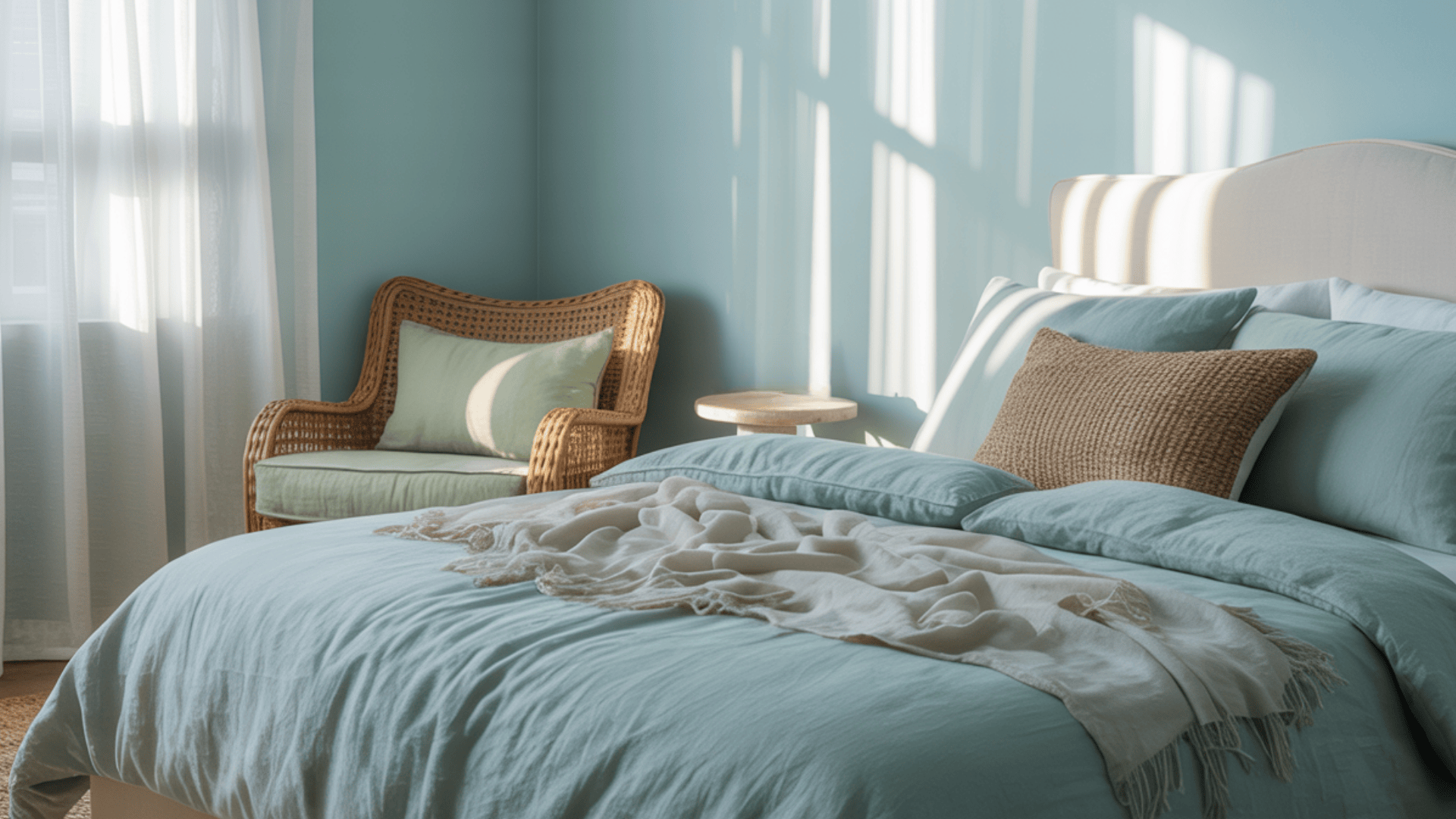
Sea salt blue mixes blue and green for a refreshing yet calming effect. Works well in coastal or spa-inspired bedrooms. Pair it with white trim and light wood furniture for a breezy feel.
Add soft fabrics like linen or cotton to keep it comfortable. A great choice for a light but soothing space.
22. Muted Mustard

Muted mustard offers warmth without being too intense. Its earthy tone pairs well with cream, taupe, or gray. Use it on an accent wall for subtle drama or throughout the room for a cozy atmosphere.
Works well with mid-century or eclectic decor. Keeps the room feeling inviting all year.
23. Dusty Lavender
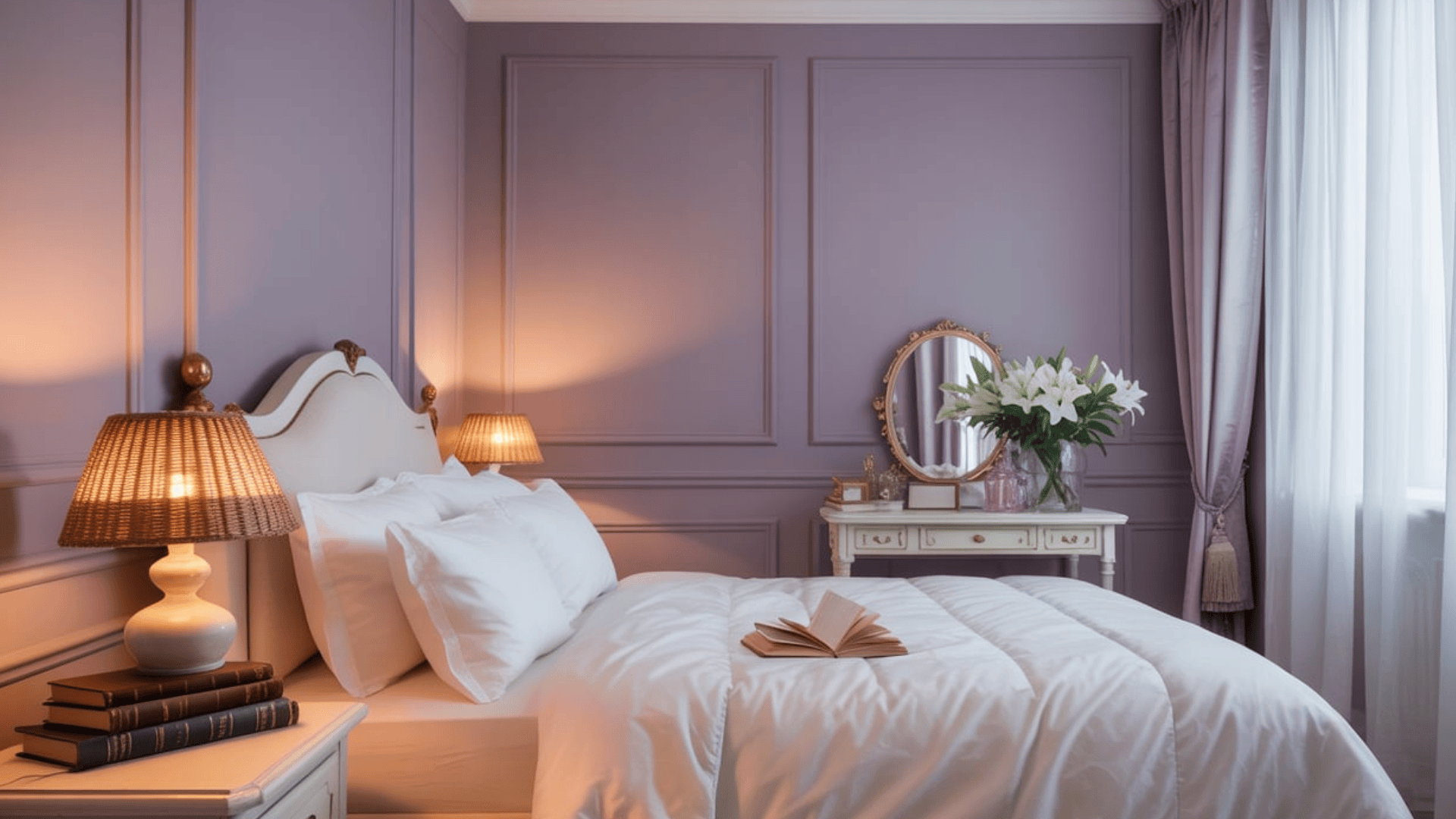
Dusty lavender adds a soft, muted charm that feels both calming and inviting. It works equally well in rooms filled with natural light or in spaces with a cozier, dimmer atmosphere.
Pair it with white bedding for a clean, crisp look, or bring in gold accents for gentle warmth. This color also pairs nicely with light wood and neutral fabrics, keeping the room balanced.
24. Willow Green
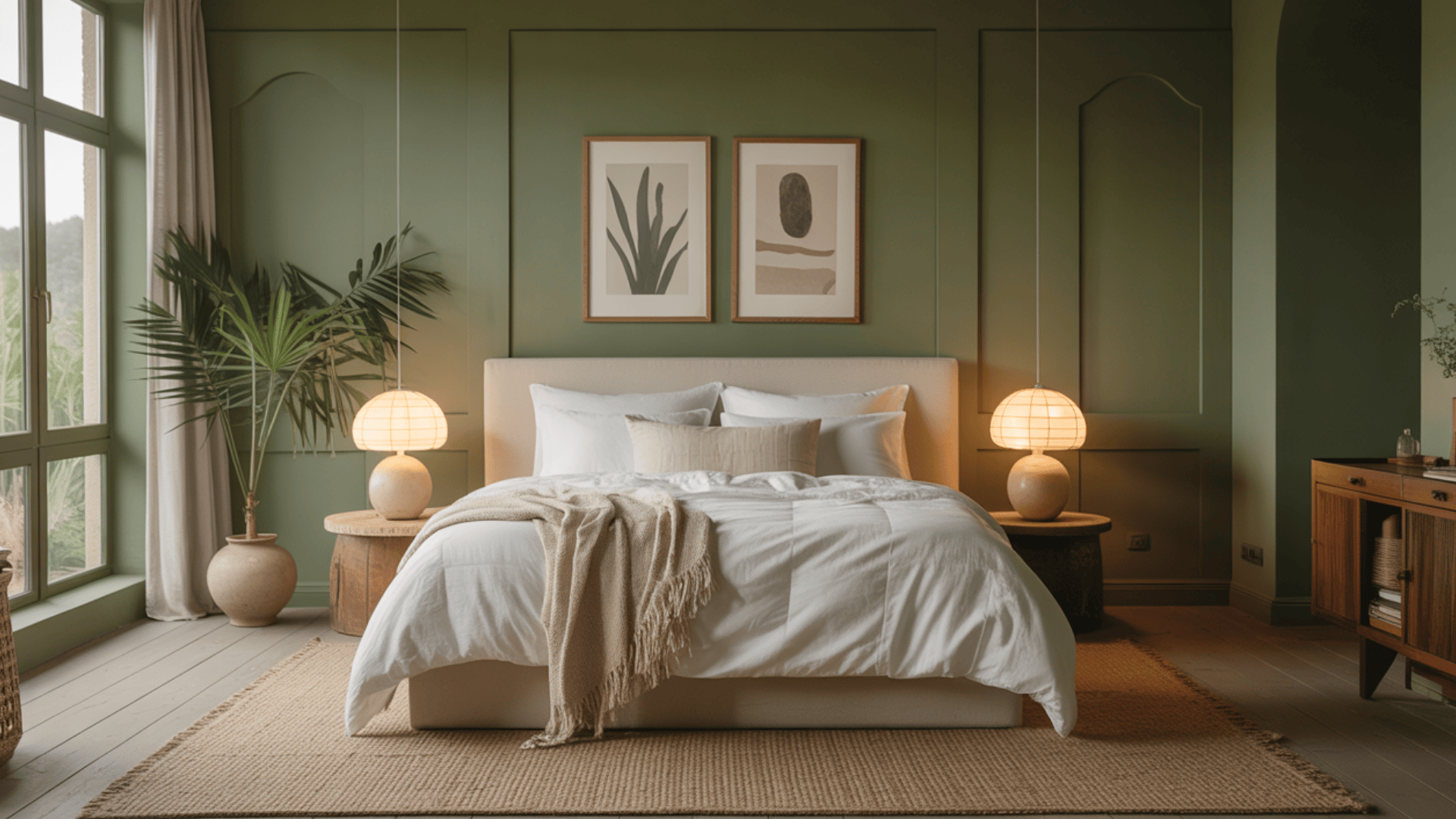
Willow green is a deep, earthy shade that brings a sense of quiet strength to the bedroom. It works best in larger rooms or spaces with good natural light, where its richness can stand out without feeling heavy.
Pair it with beige, cream, or soft taupe to create a balanced look. Natural textures like linen bedding, woven rugs, or wooden accents enhance its organic feel.
25. Mushroom Gray
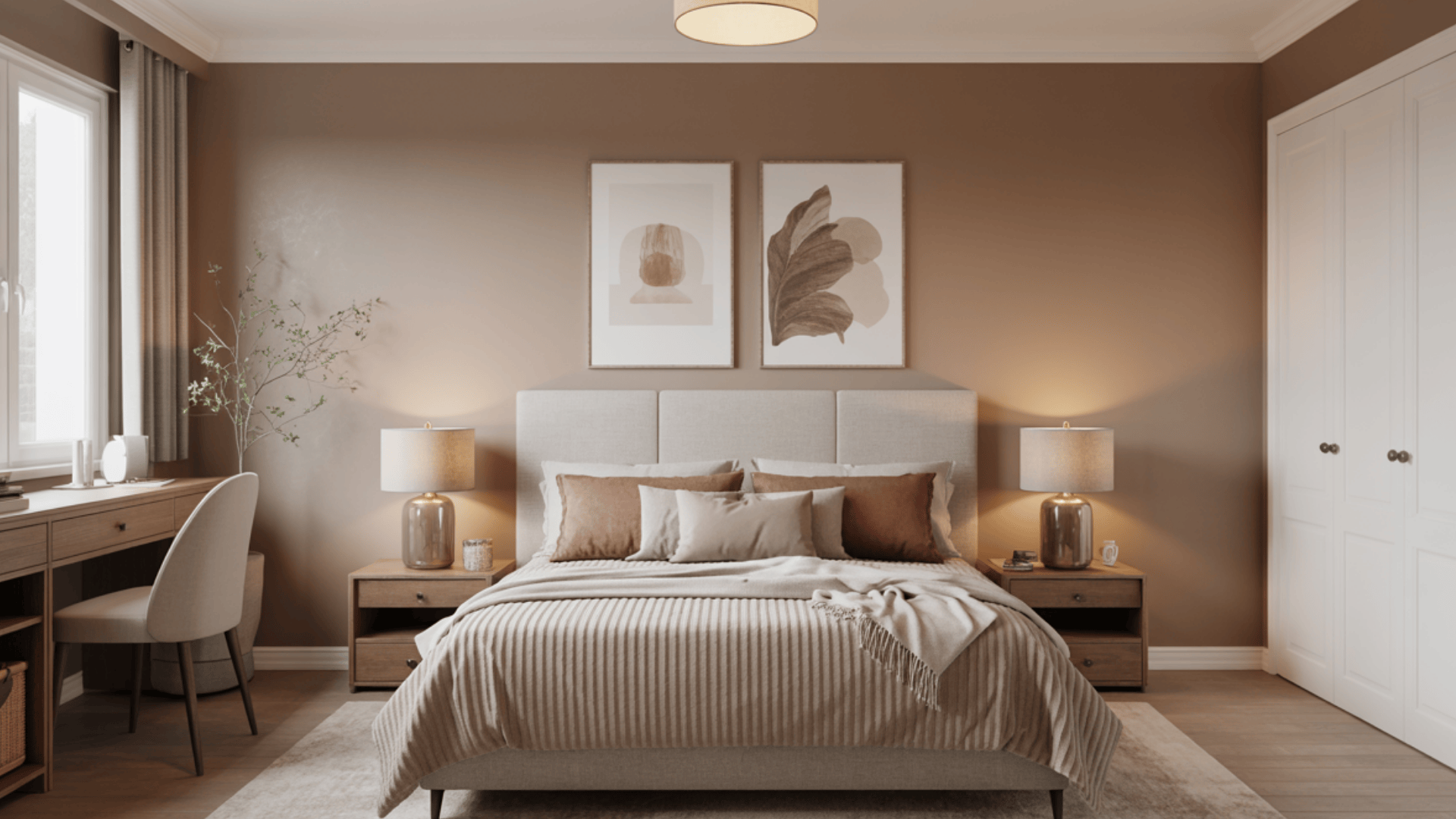
Mushroom gray blends taupe and gray for a warm, welcoming tone that works in almost any bedroom. Use white or cream bedding for a soft, layered look, or add deep browns for a cozier effect.
This shade feels relaxed yet refined, making it perfect for everyday comfort. Natural textures like wool throws or woven rugs can add depth without overpowering the color.
26. Cool Beige
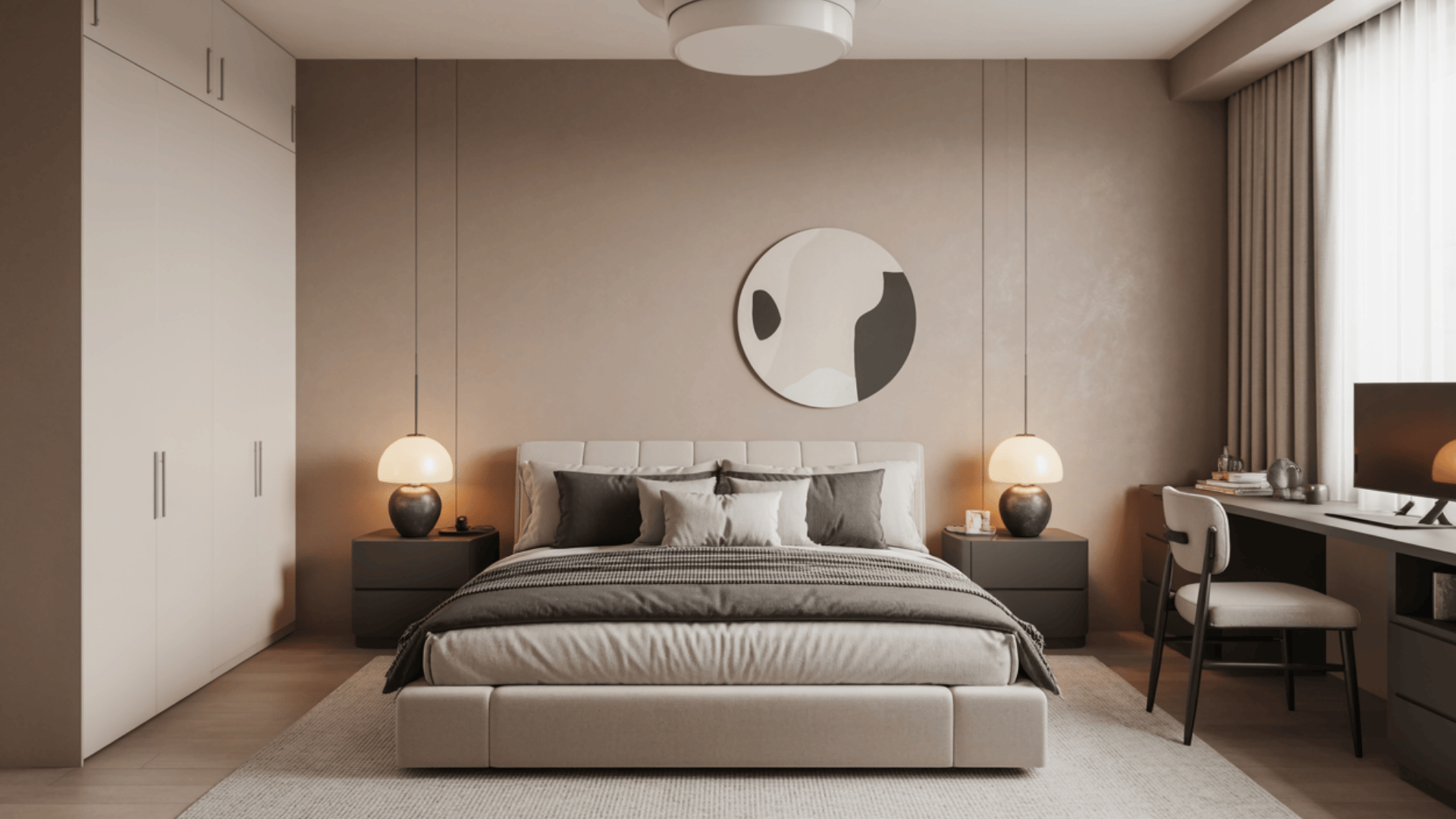
Cool beige carries a subtle gray undertone that gives it a modern, fresh feel. It’s perfect for rooms that need a neutral base with a bit of personality.
Pair it with black or crisp white for a clean contrast, or bring in blush tones for gentle warmth. This shade suits minimalist spaces but still works with layered, cozy designs.
27. Light Denim Blue

Light denim blue is casual and approachable, bringing a lived-in comfort to the bedroom. It adds depth without making the space feel dark, making it a great middle-ground color.
It works beautifully with white bedding and simple furniture for a fresh look. You can add patterned cushions or striped throws to keep it playful.
28. Ivory Cream
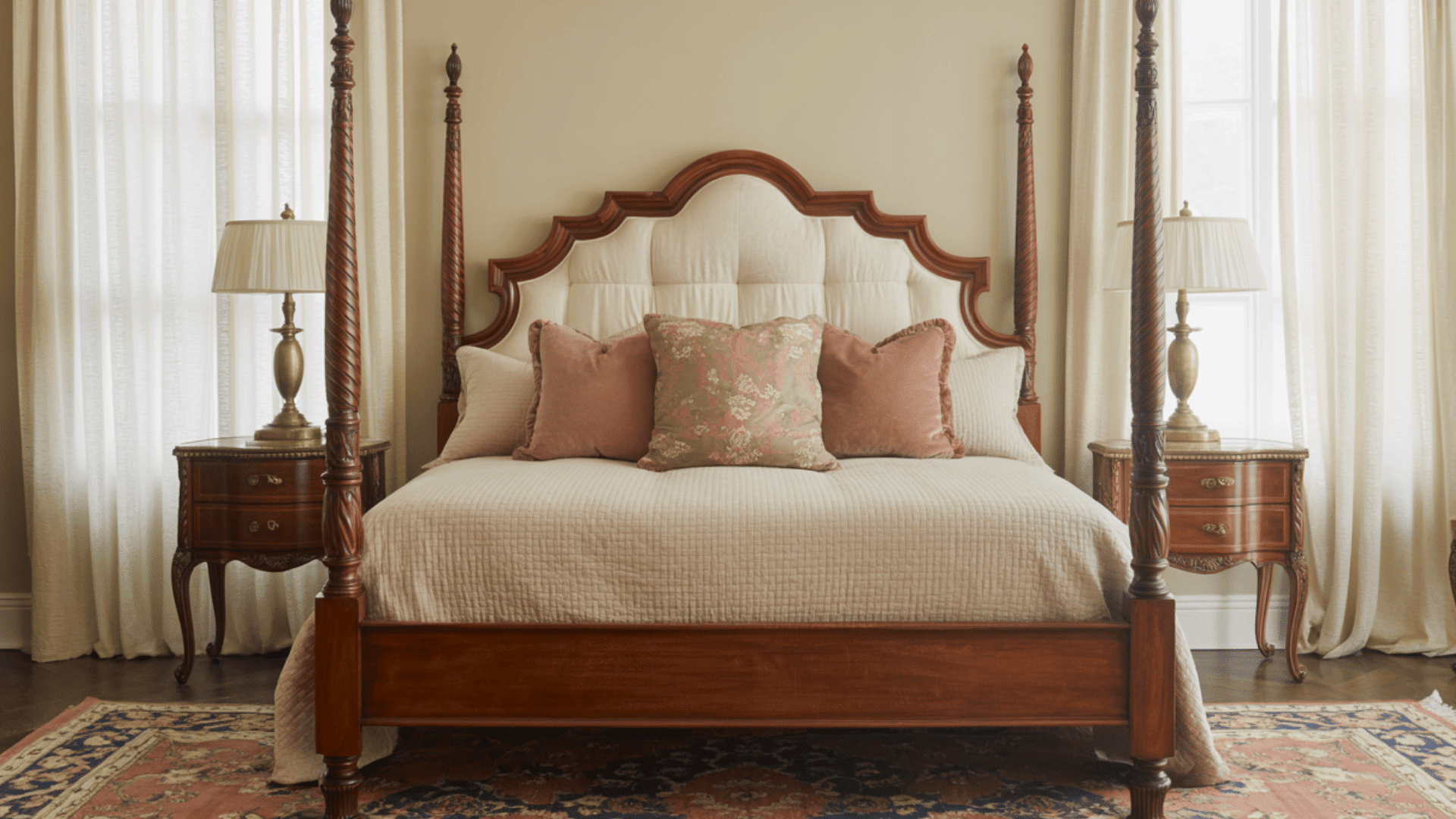
Ivory cream has a soft glow that instantly brightens a bedroom without being stark. Its gentle warmth pairs effortlessly with wood tones, metals, and natural fabrics.
Suitable for both modern and traditional styles, this shade is incredibly versatile. Layer bedding in similar tones for a seamless, relaxing feel. It’s an easy backdrop for changing decor throughout the seasons.
29. Terracotta Blush
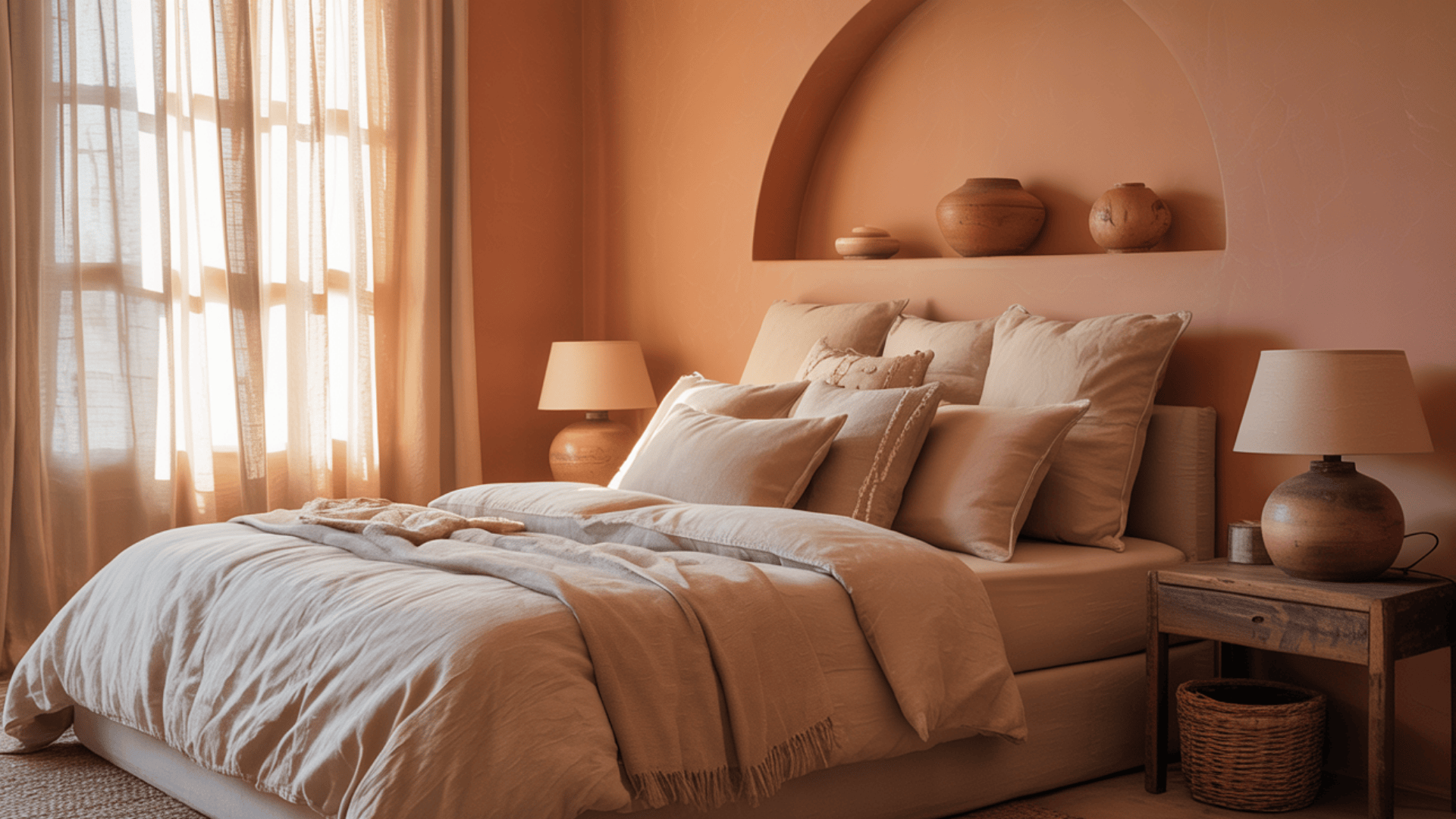
Terracotta blush offers an earthy warmth softened by a touch of pink. It brings a grounded yet inviting feel to the bedroom. You can pair it with rustic wood, woven accents, and neutral bedding.
Works equally well in modern boho or desert-inspired spaces. Adding textured cushions or throws gives the room a richer, more layered look.
30. Moonlight Gray
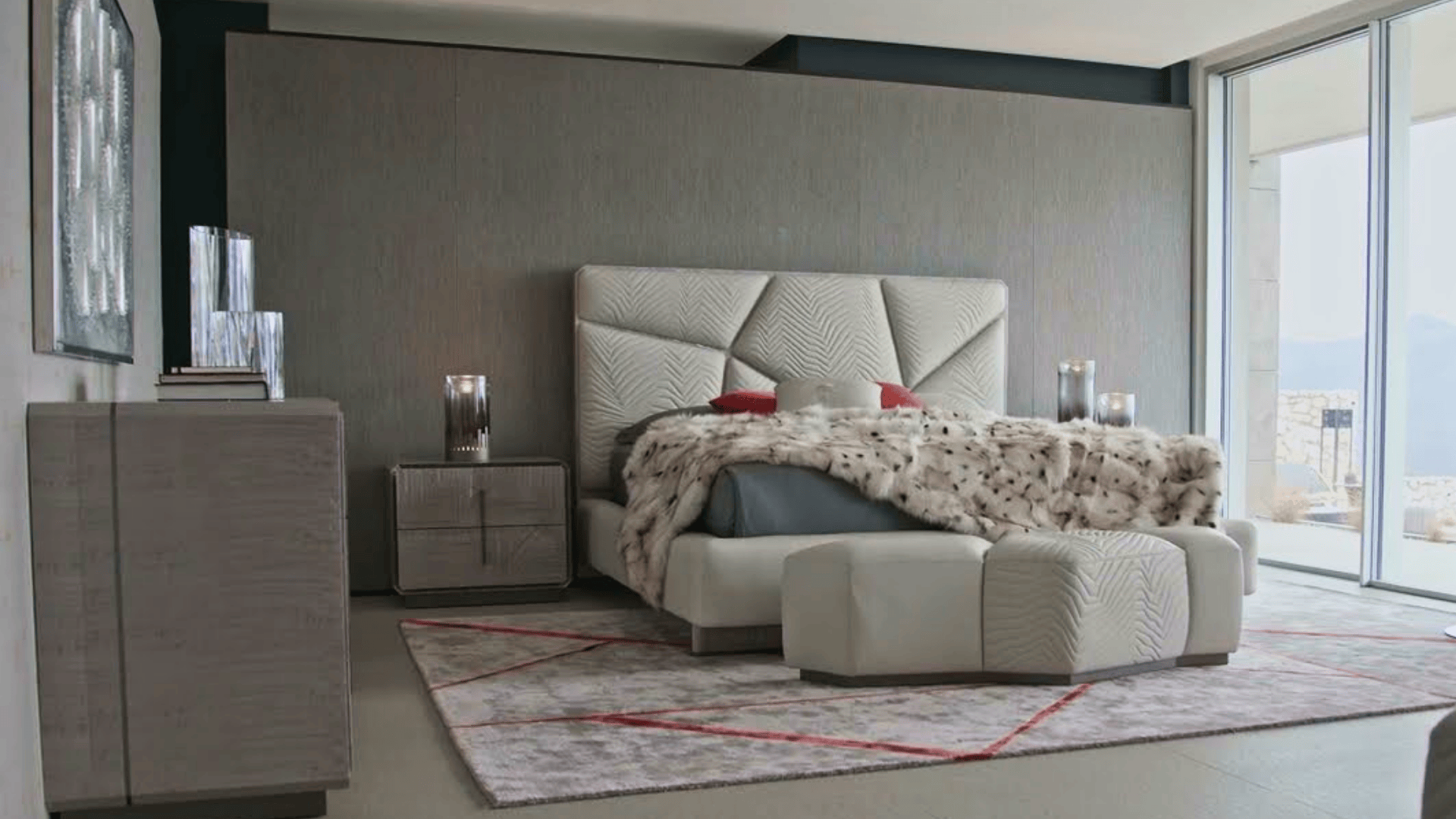
Moonlight gray is a light, silvery shade that feels calm and airy. Its soft reflective quality helps brighten the space without adding glare. Works well with blues, lavenders, and crisp whites for a dreamy, coordinated palette.
Use gentle, diffused lighting to highlight its subtle sheen. This color creates a quiet backdrop that encourages rest and relaxation.
A thoughtful paint choice can completely change how your bedroom feels. The right shade sets the tone for rest, comfort, and a space that feels truly your own.
Choosing the Right Paint for Your Master Bedroom
Before you choose a color, it’s important to think about how it will look and feel in your space. The right undertone, lighting, and finish can make a big difference.
Even if two colors look similar, their undertones can change the mood of the room.
Warm undertones include hints of yellow, red, or orange. These make the room feel cozy and welcoming. Cool undertones have blue, green, or purple tints. These help create a calm, peaceful vibe.
How to test them:
- Paint small swatches on different walls
- Check how they look in morning and evening light
- Compare them with your furniture and bedding
Always test before committing to a full wall. What looks good on a sample card can feel totally different in your space.
Room Lighting Considerations
Light can change how paint looks, depending on the time of day and the light source.
- Natural daylight shows the truest version of a color
- Warm artificial light (like soft white bulbs) can make colors look more yellow or orange
- Cool artificial light (like daylight LEDs) may bring out blue or gray tones
Try checking your paint samples in both daylight and at night. This helps you see how the color shifts.
Paint Finishes for a Relaxing Look
Paint finish affects not just how your walls look, but also how they feel in the room. Here are some common finishes and how they work in a bedroom:
- Flat/Matte: Soft, non-reflective finish. Hides wall flaws. Great for a cozy look
- Eggshell: Has a slight sheen. More durable than flat but still soft-looking
- Satin: Smooth and a bit shiny. Easier to clean. Best for high-traffic bedrooms or kids’ rooms
For a peaceful space, stick with flat or eggshell. They keep things calm and quiet, visually.
Relaxing Paint Color Combinations Tips
Blending the right paint shades can bring style to your master bedroom. Soft, muted tones are a great base for calm bedroom paint colors. Use gentle wall shades with creamy or warm white trim to keep the space feeling bright and smooth while adding just enough contrast.
Create a focal point with an accent wall by choosing a deeper, muted version of your main color, like pairing soft sage walls with a rich olive green accent.
Go for two-tone walls to add interest without clutter by painting the lower half in a deeper shade (like mushroom gray) and the upper half in a light neutral (like ivory or pale taupe), separated by a chair rail or molding.
Stick to low-contrast combinations if you want a more seamless look, or mix textures like matte and satin finishes for subtle variety.
These layered approaches help maintain a relaxing feel while making your bedroom look intentional and visually balanced.
Common Paint Mistakes to Avoid
A peaceful bedroom starts with the right paint choices. Avoiding these common mistakes can help keep your space calm, cozy, and visually balanced:
- Choosing colors that are too bold: Bright or loud shades can feel energizing or overwhelming, exactly the opposite of what you want in a restful space.
- Ignoring natural light: A color might look perfect in-store, but it can appear too dark or dull at home. Always test paint in your room’s actual lighting.
- Skipping undertone checks: Warm and cool undertones affect the mood. Make sure your wall color complements the trim, furniture, and lighting.
- Using high-sheen finishes: Glossy finishes reflect too much light and can feel harsh. Stick to flat, matte, or eggshell for a softer look.
- Painting all walls the same color: Too much of one color can feel flat or dull. Break it up with trim, accents, or a two-tone combo for visual flow.
Smart paint choices make all the difference when creating a bedroom that feels truly restful and inviting.
Conclusion
I’ve seen in my own home how much a paint color can change the mood of a room. Now that you’ve got these relaxing master bedroom paint ideas, you have plenty of ways to make your space feel more peaceful and personal.
I like to test a few shades before deciding, mix in calming color combinations, and avoid small painting mistakes that can turn into big frustrations later.
Even a tiny change like going a shade softer or choosing a better finish has made a huge difference in how my bedroom feels day to day. If you want more color tips, design ideas, or simple home upgrades, check out other blogs on the website!





